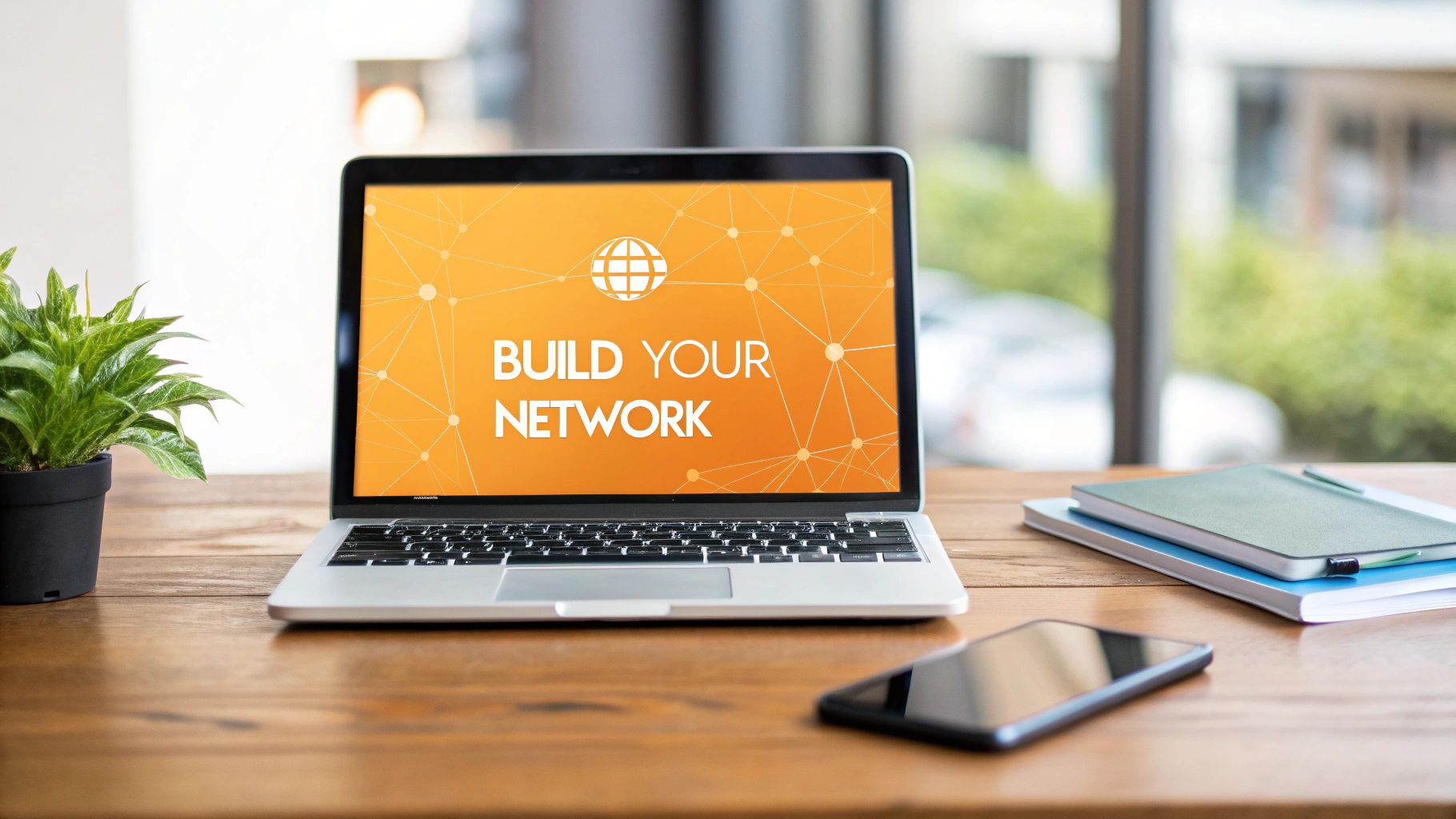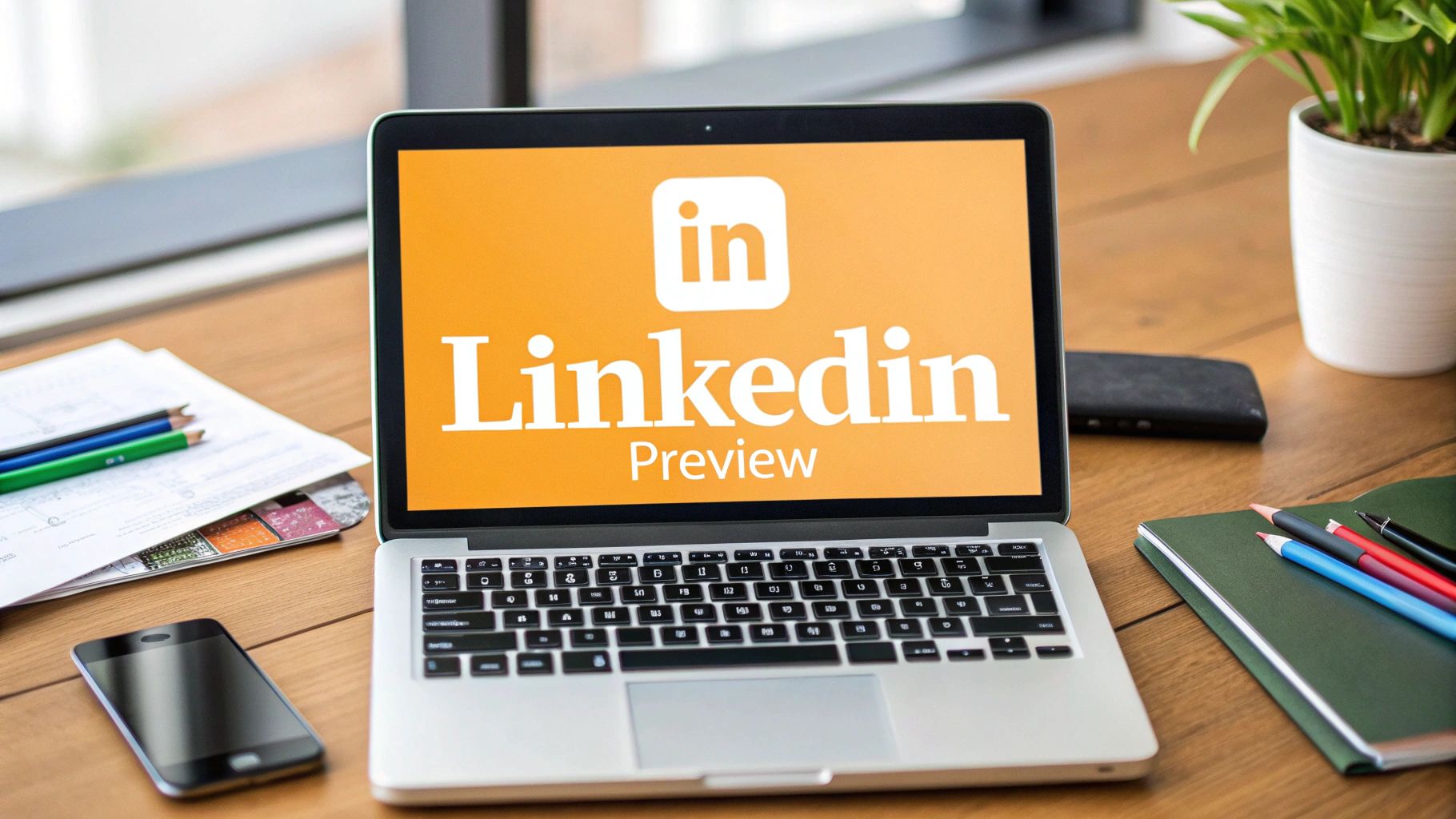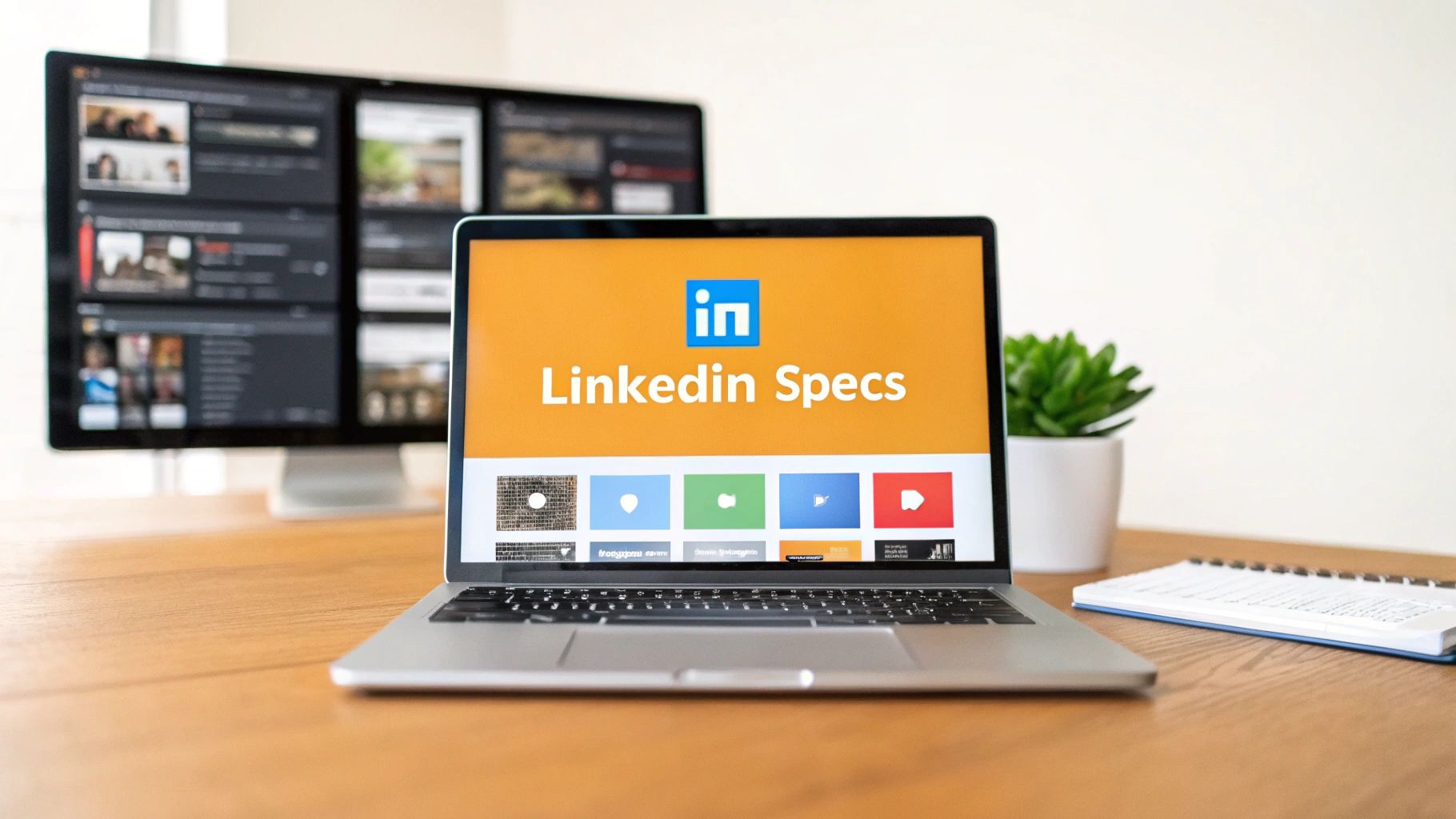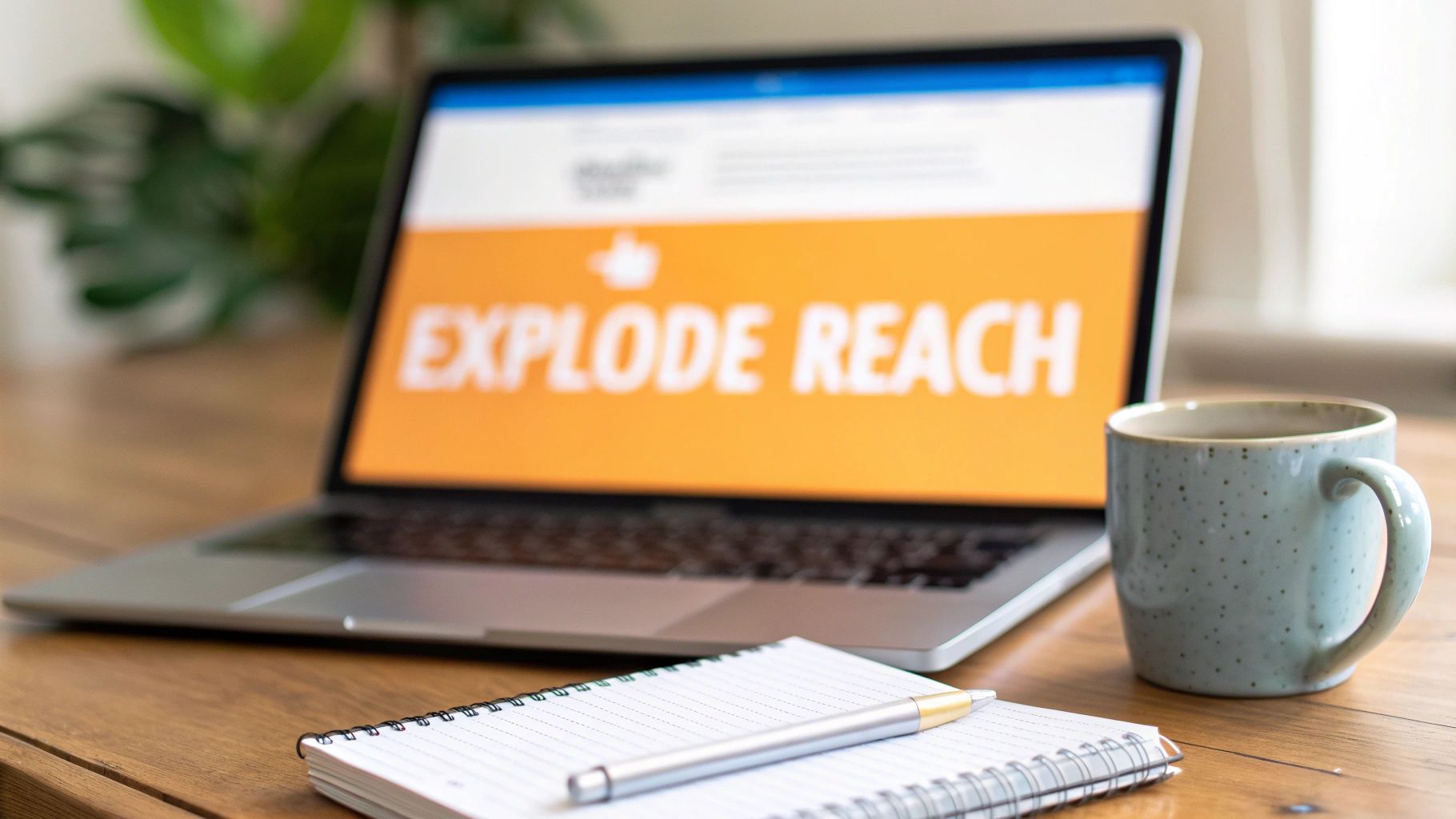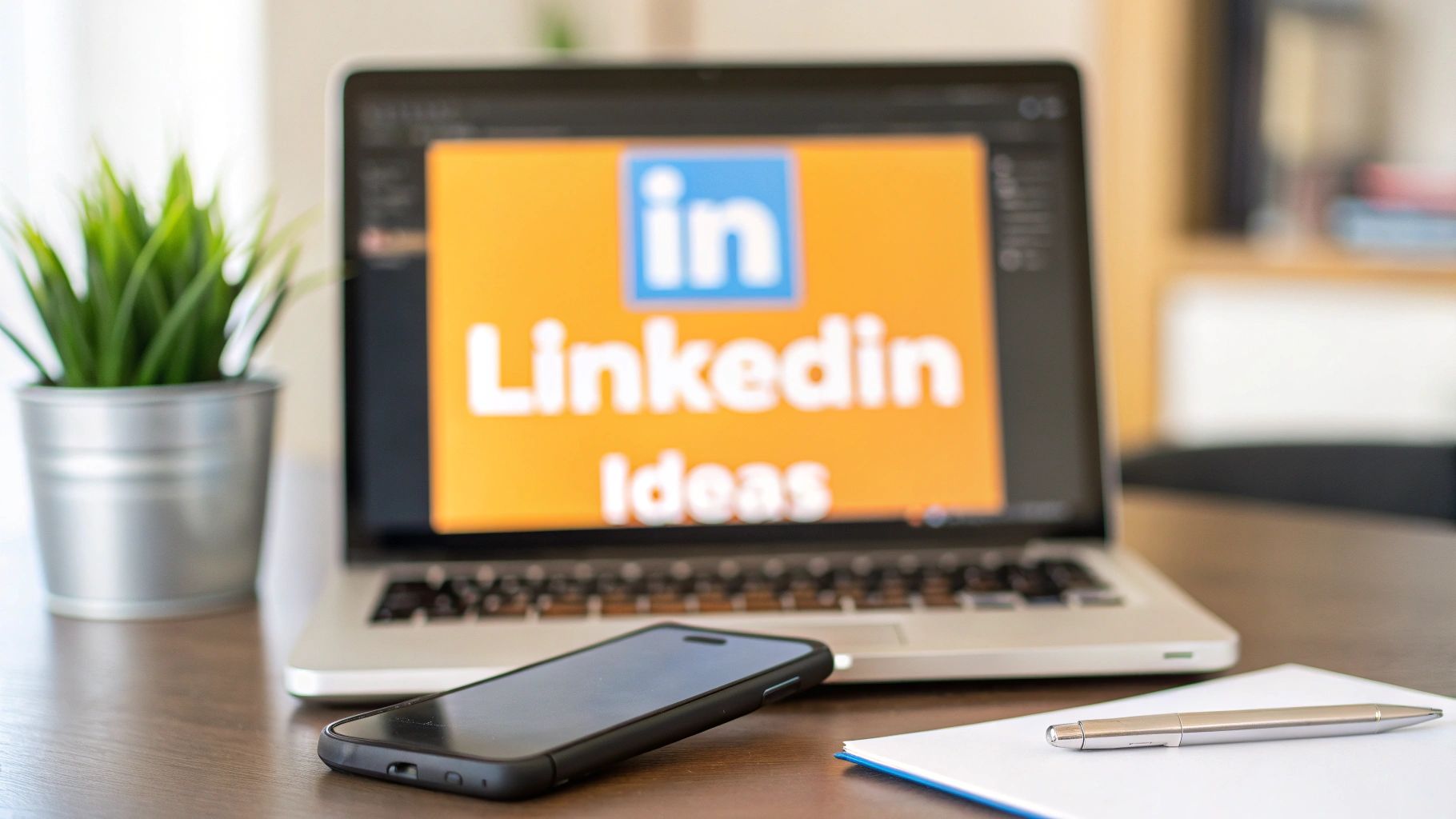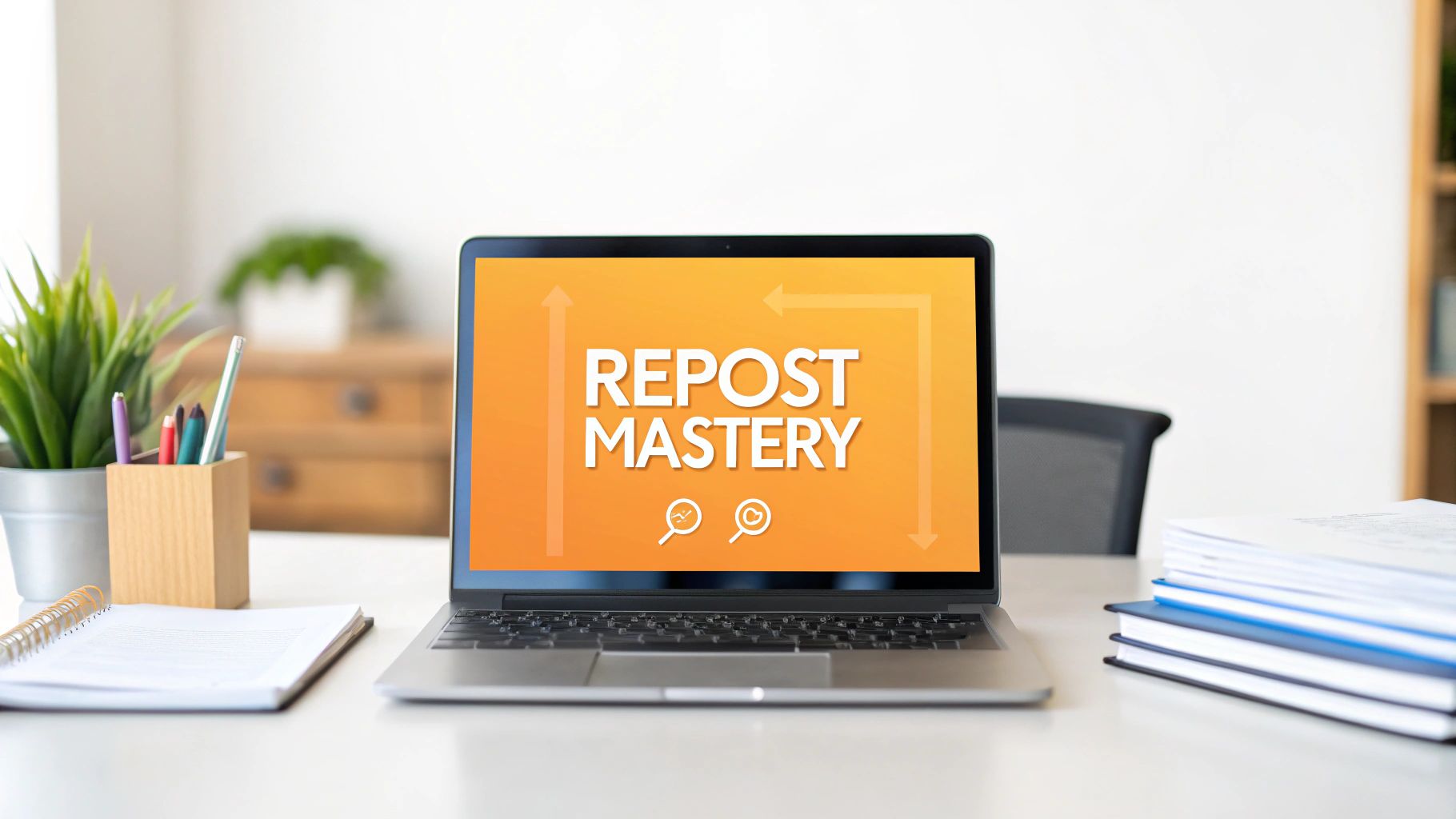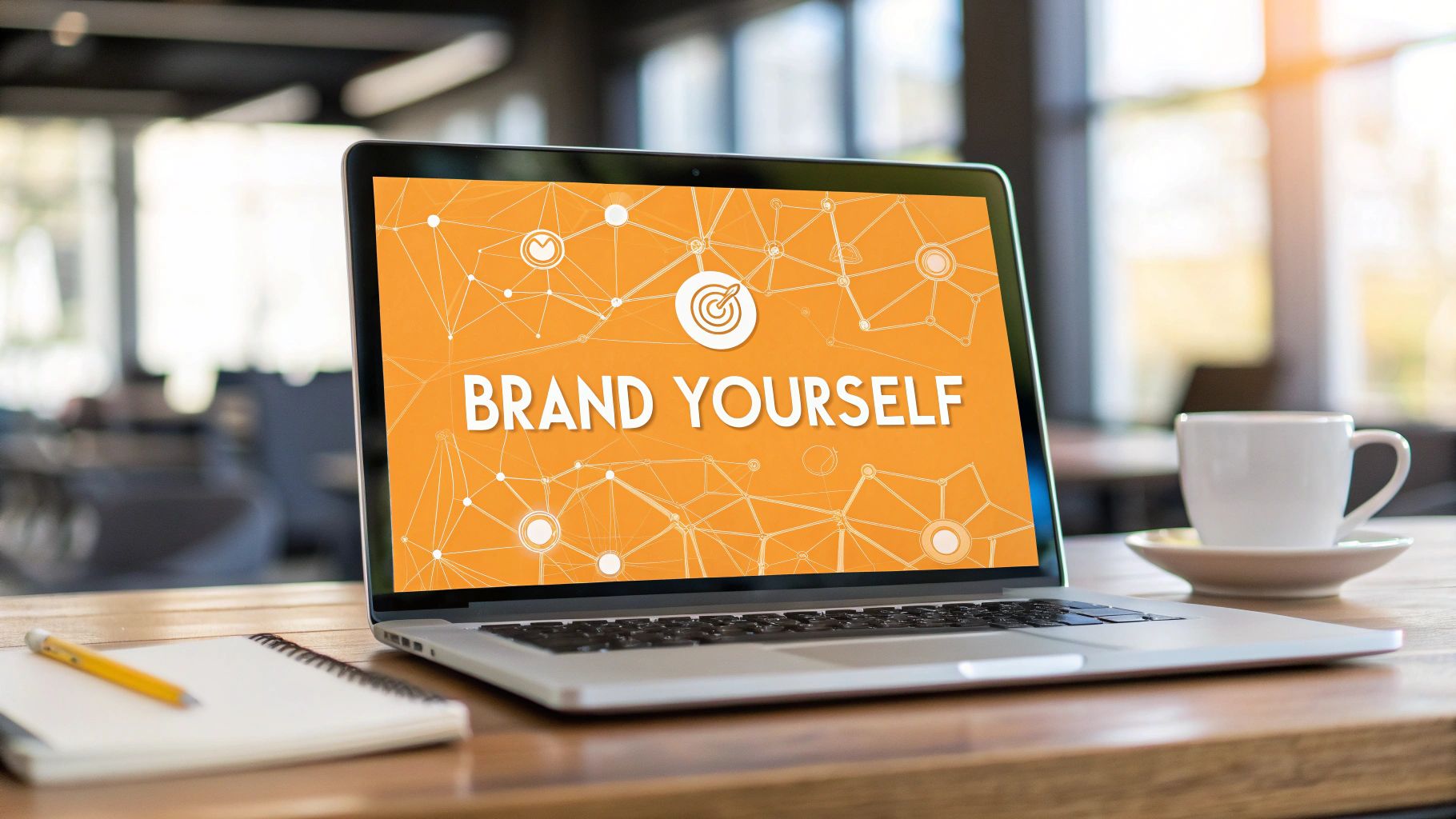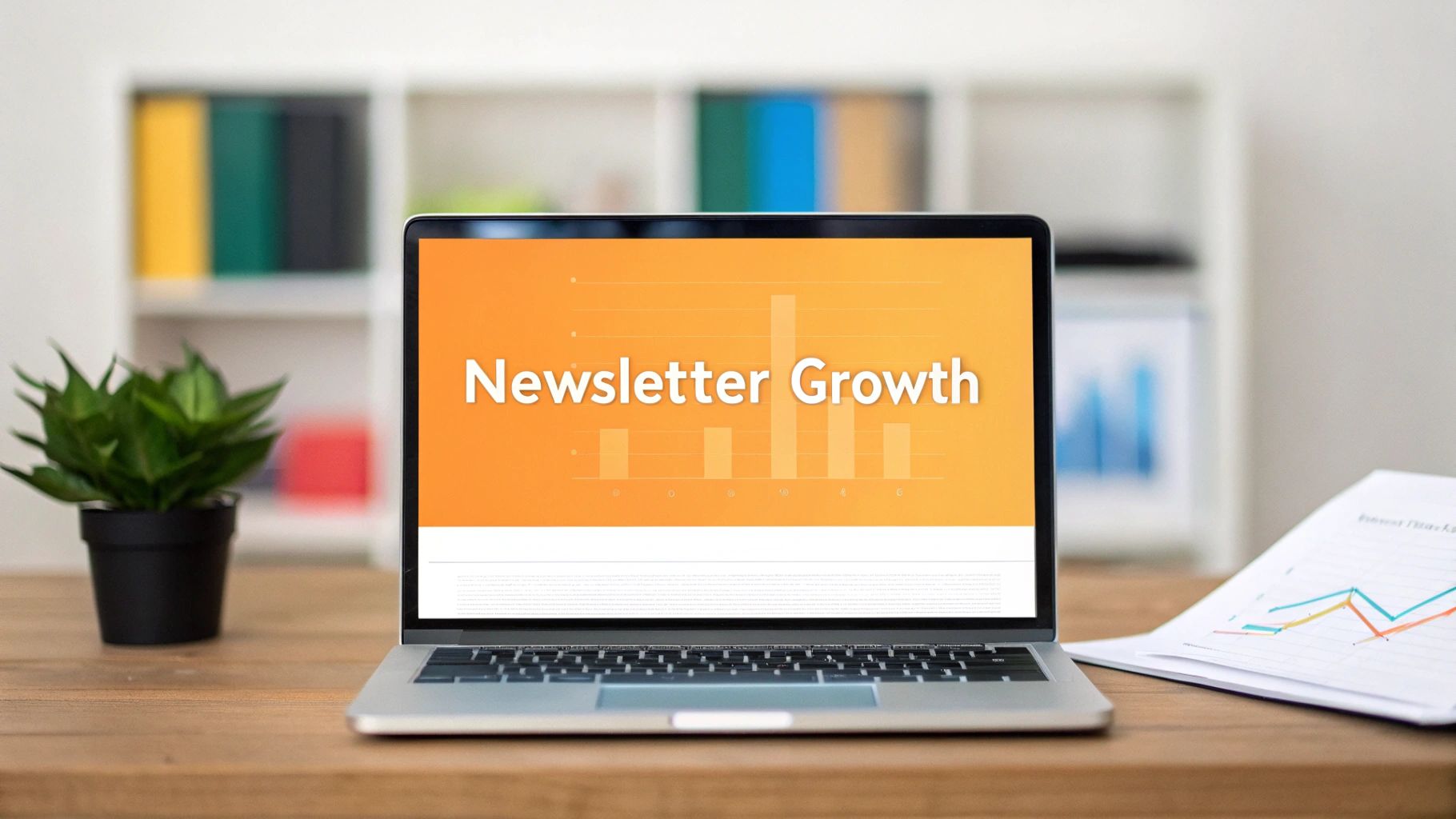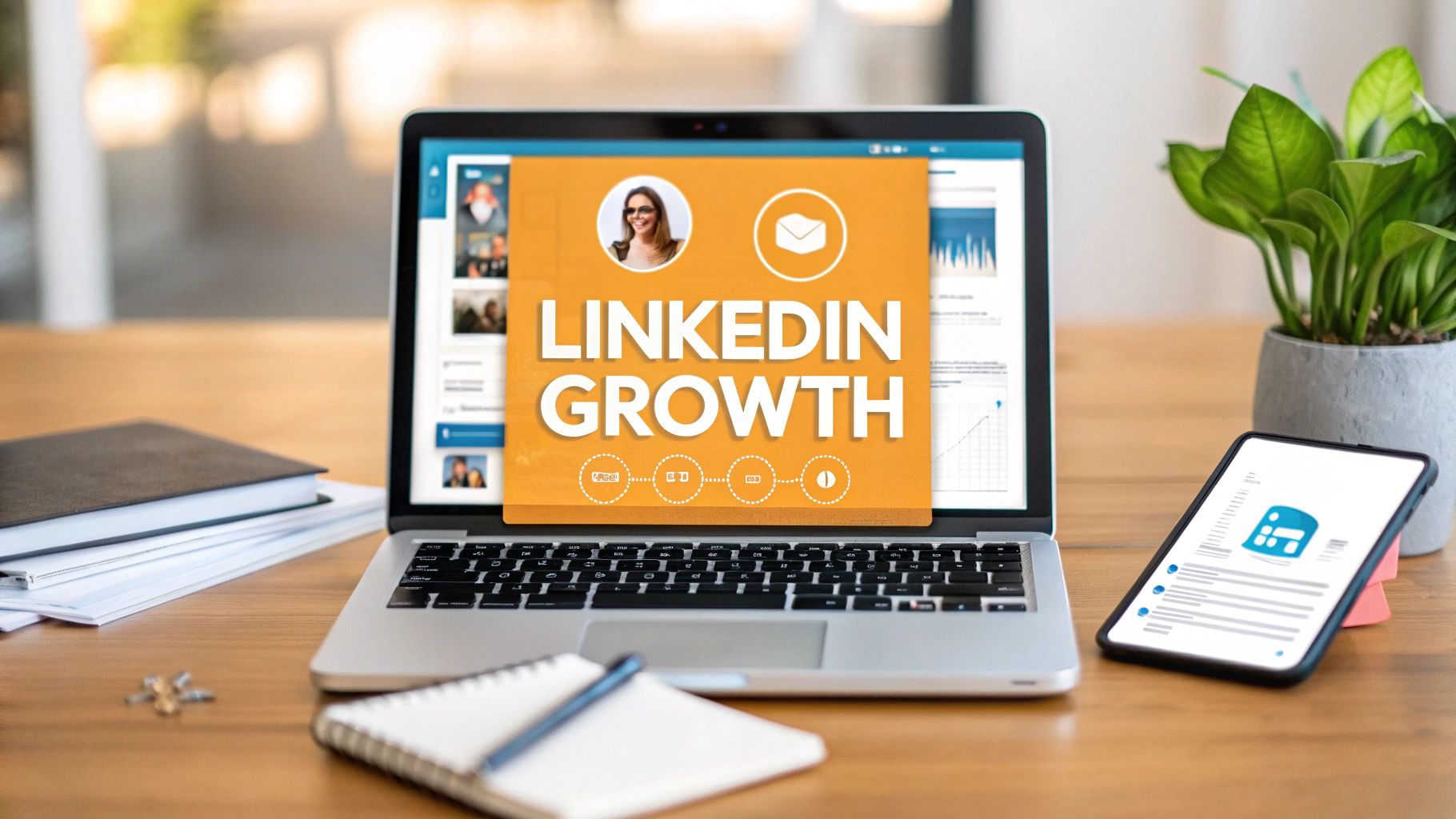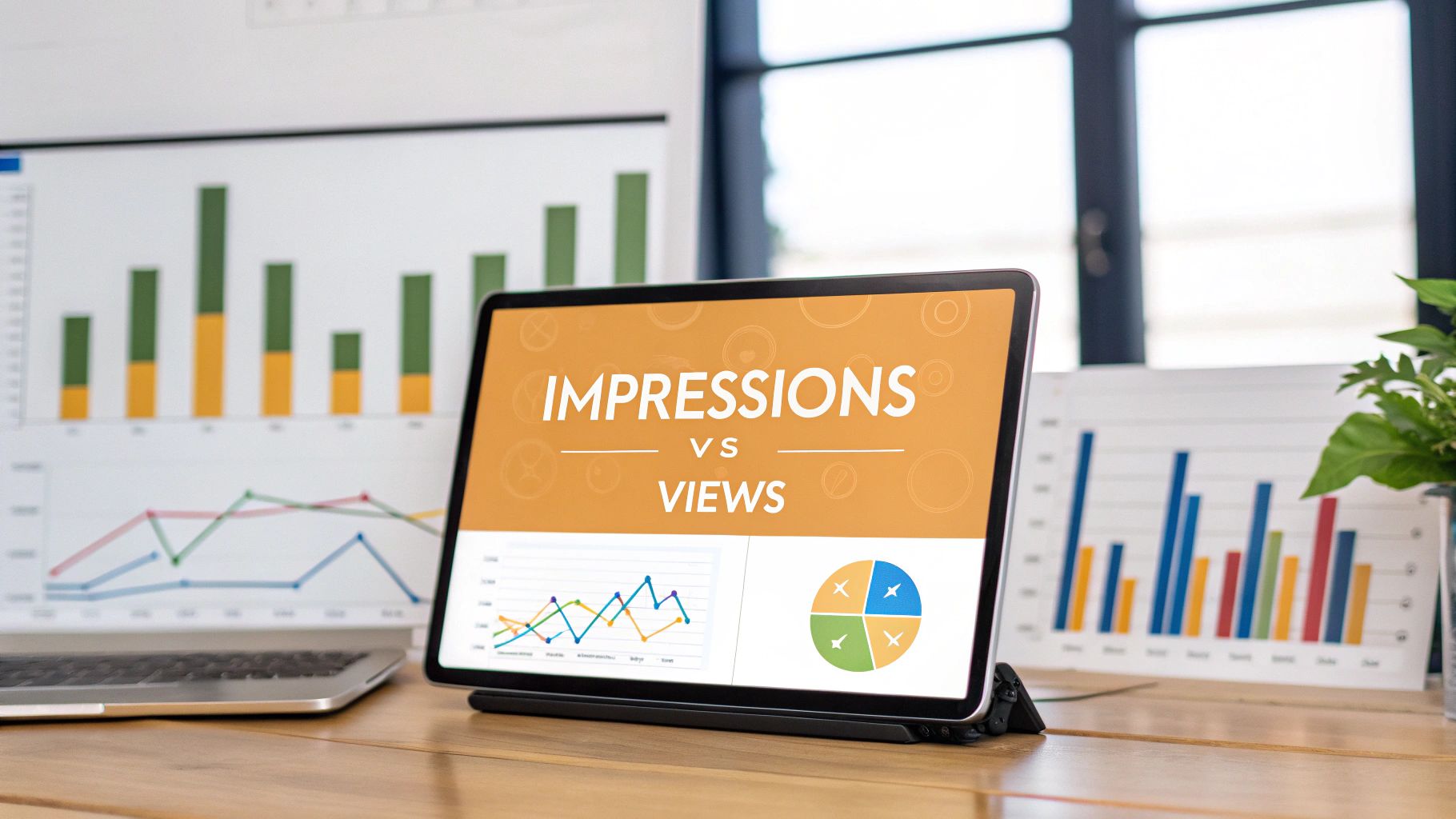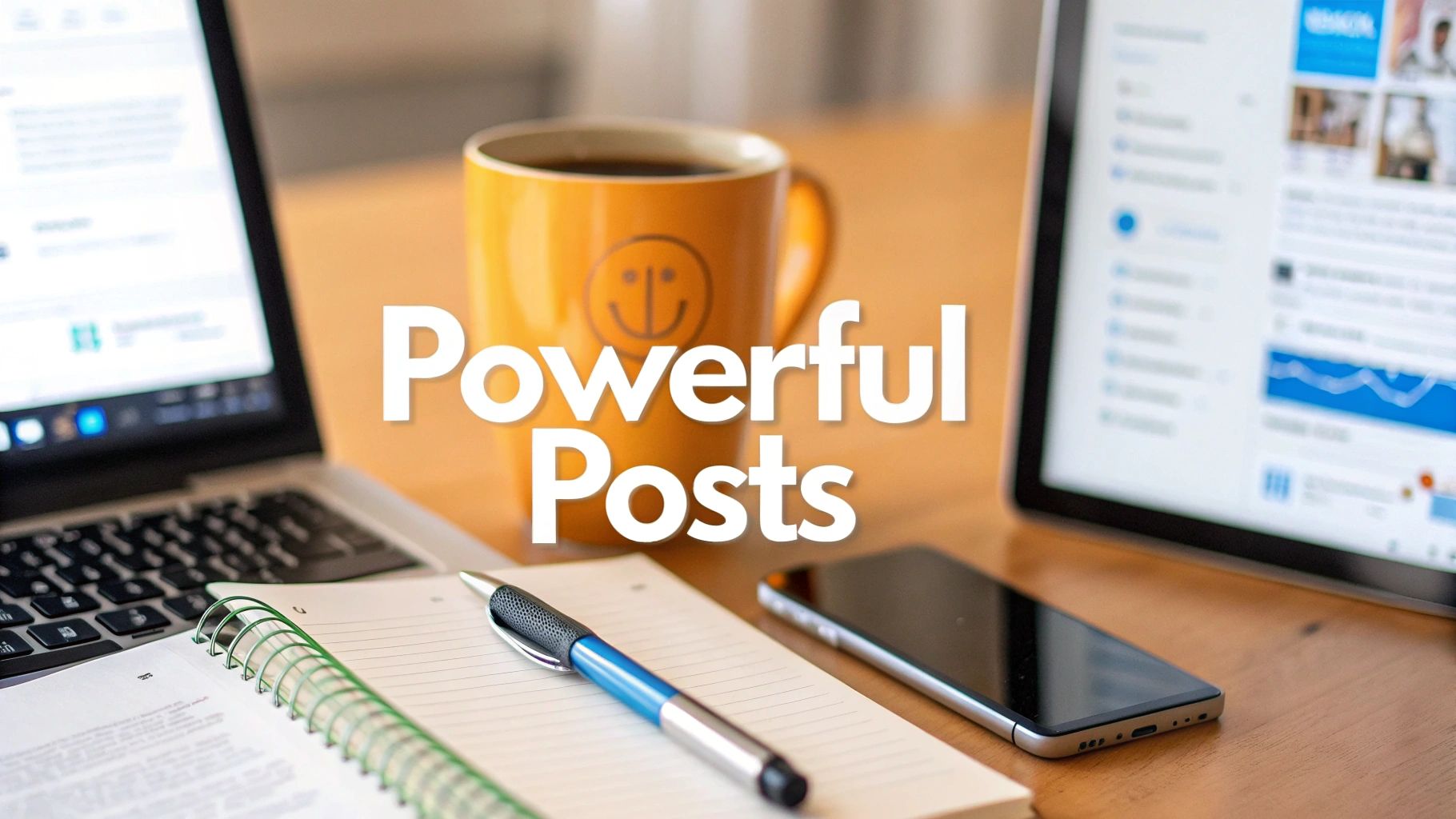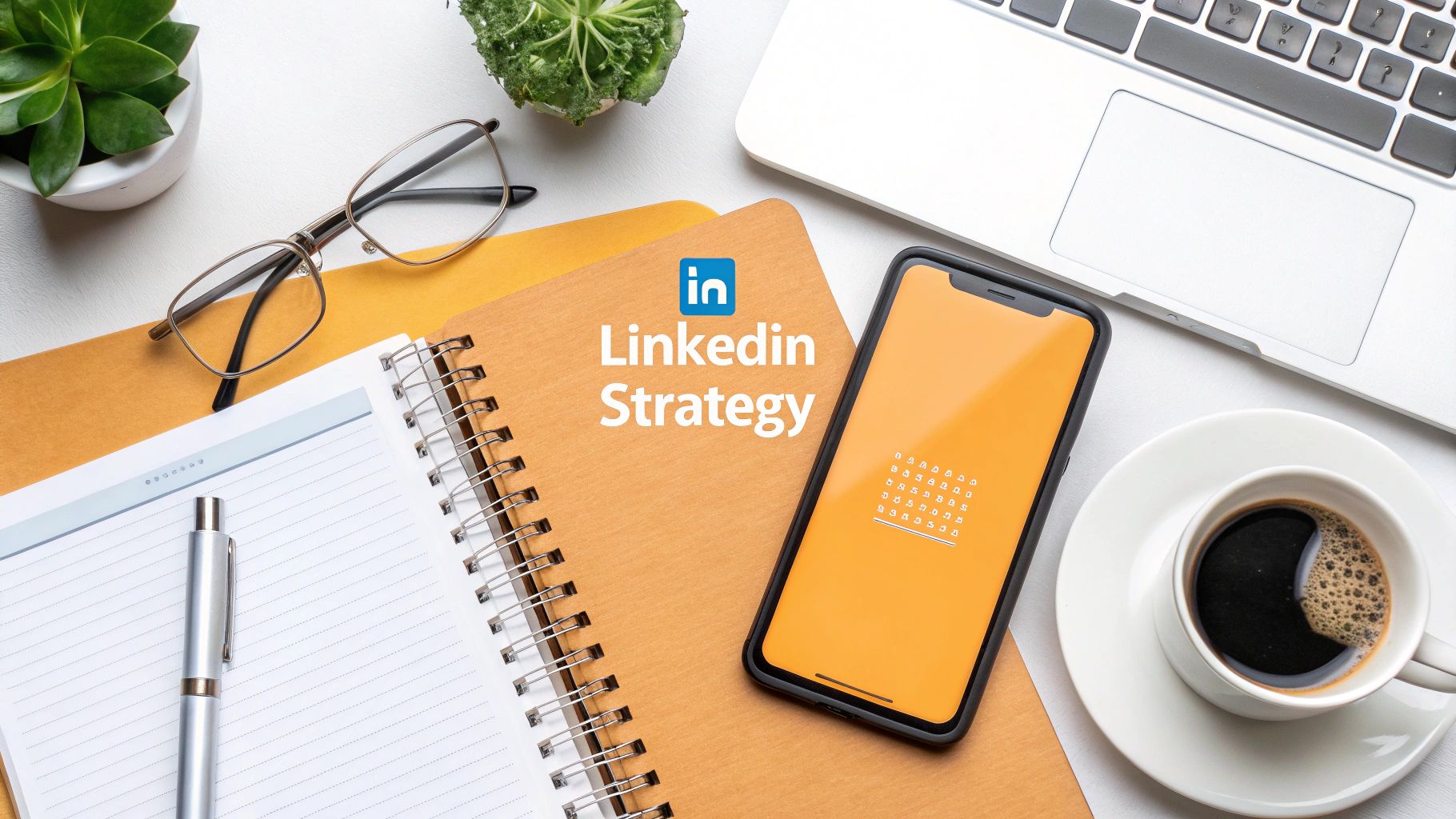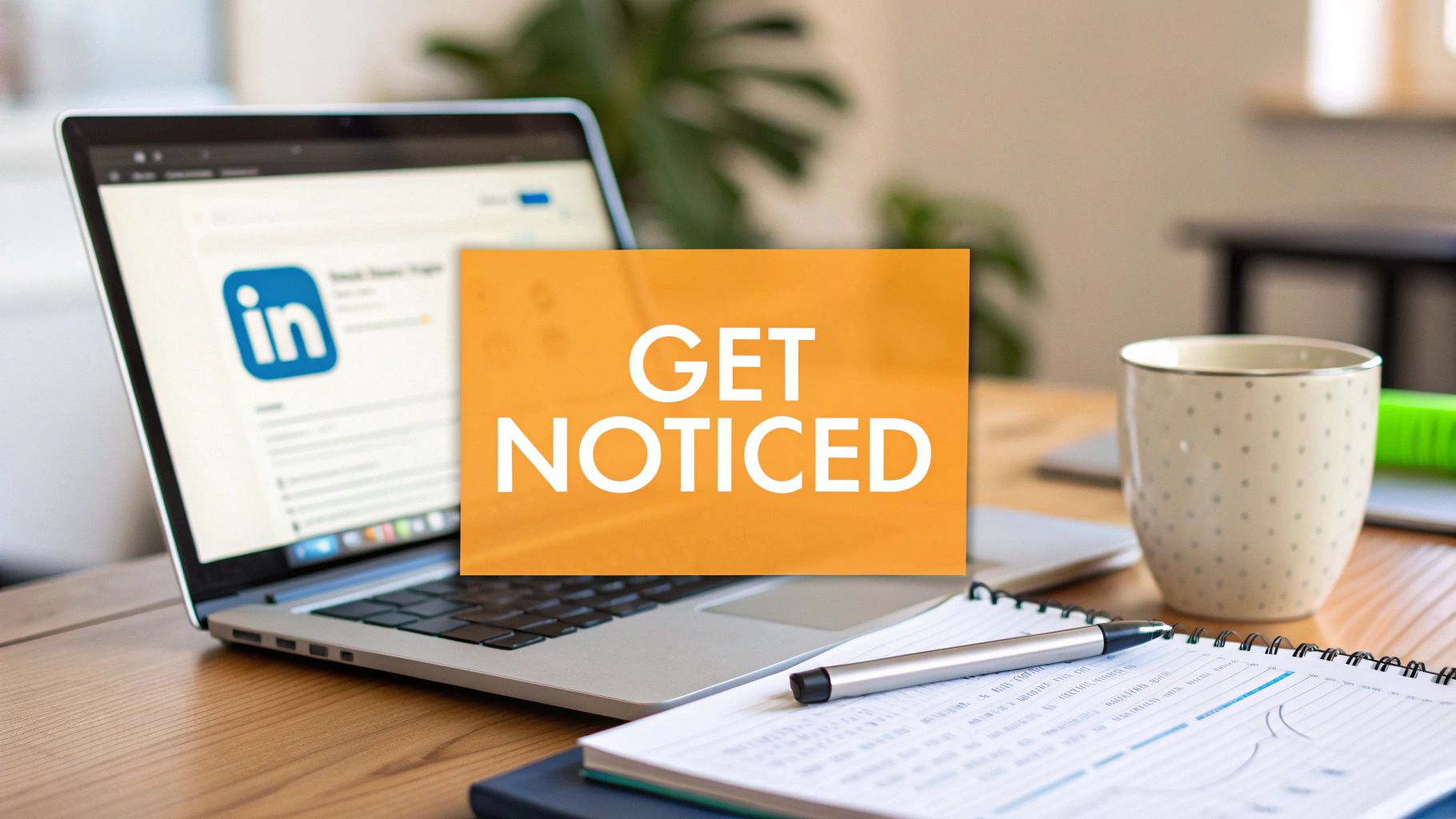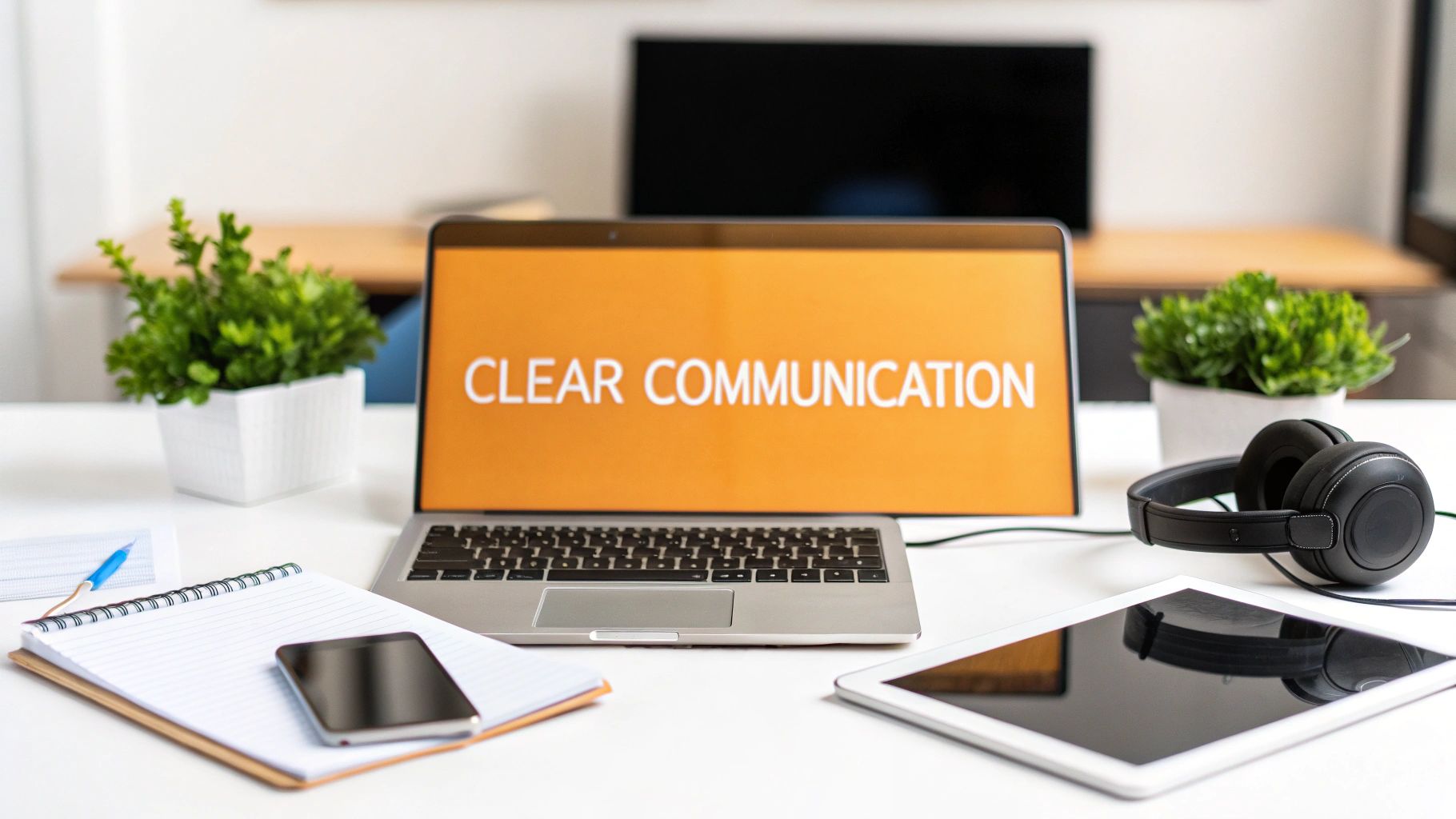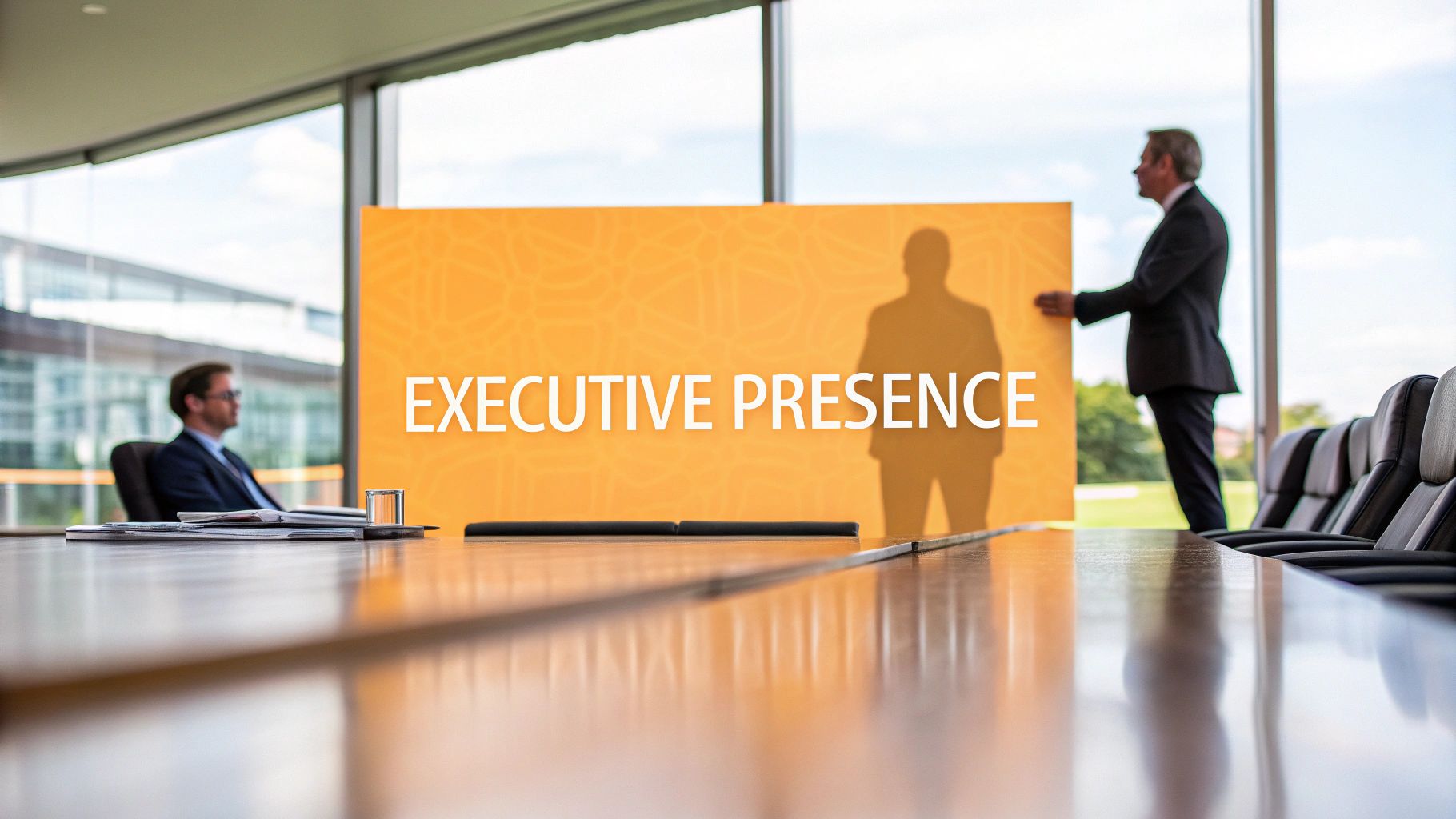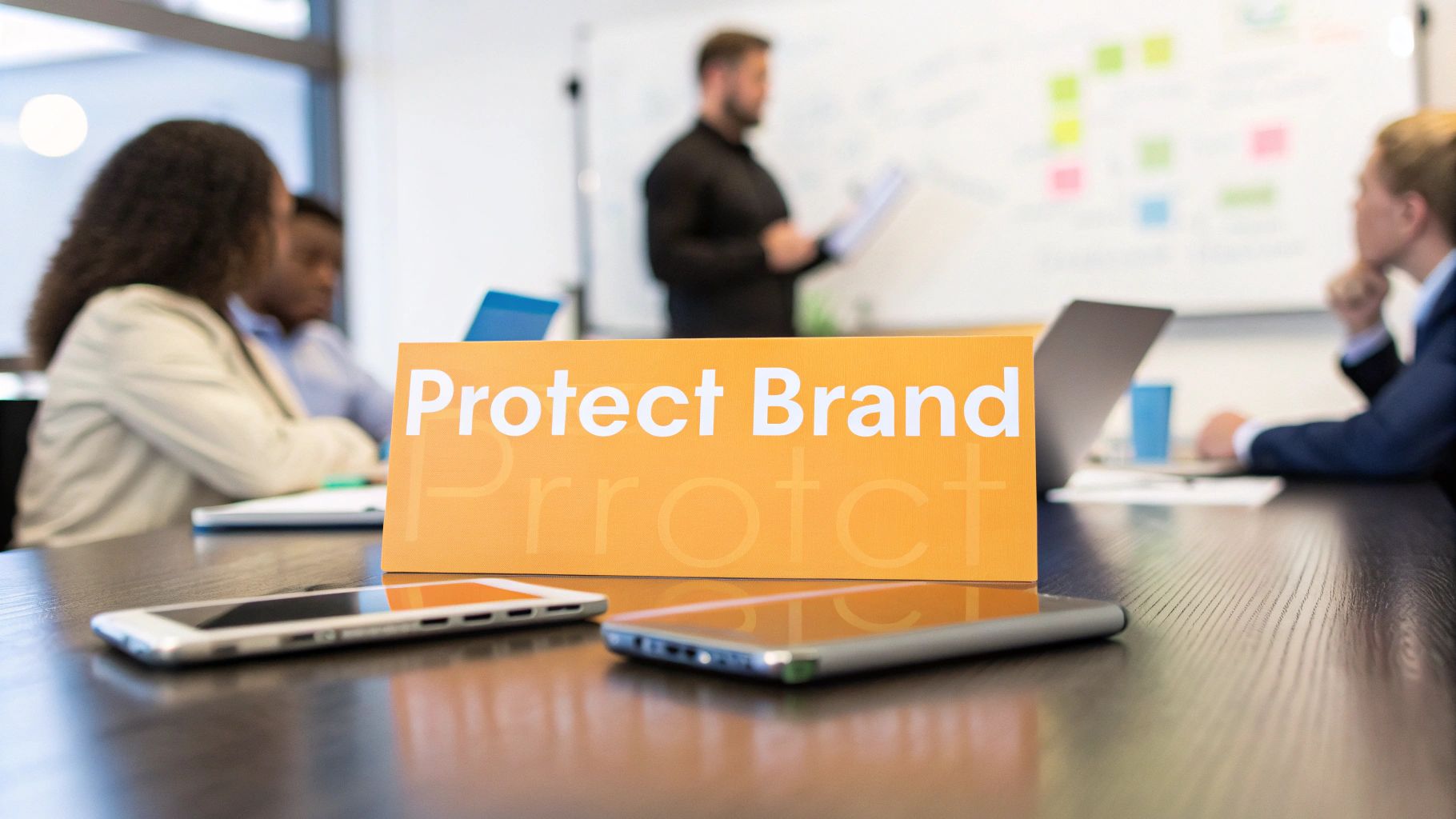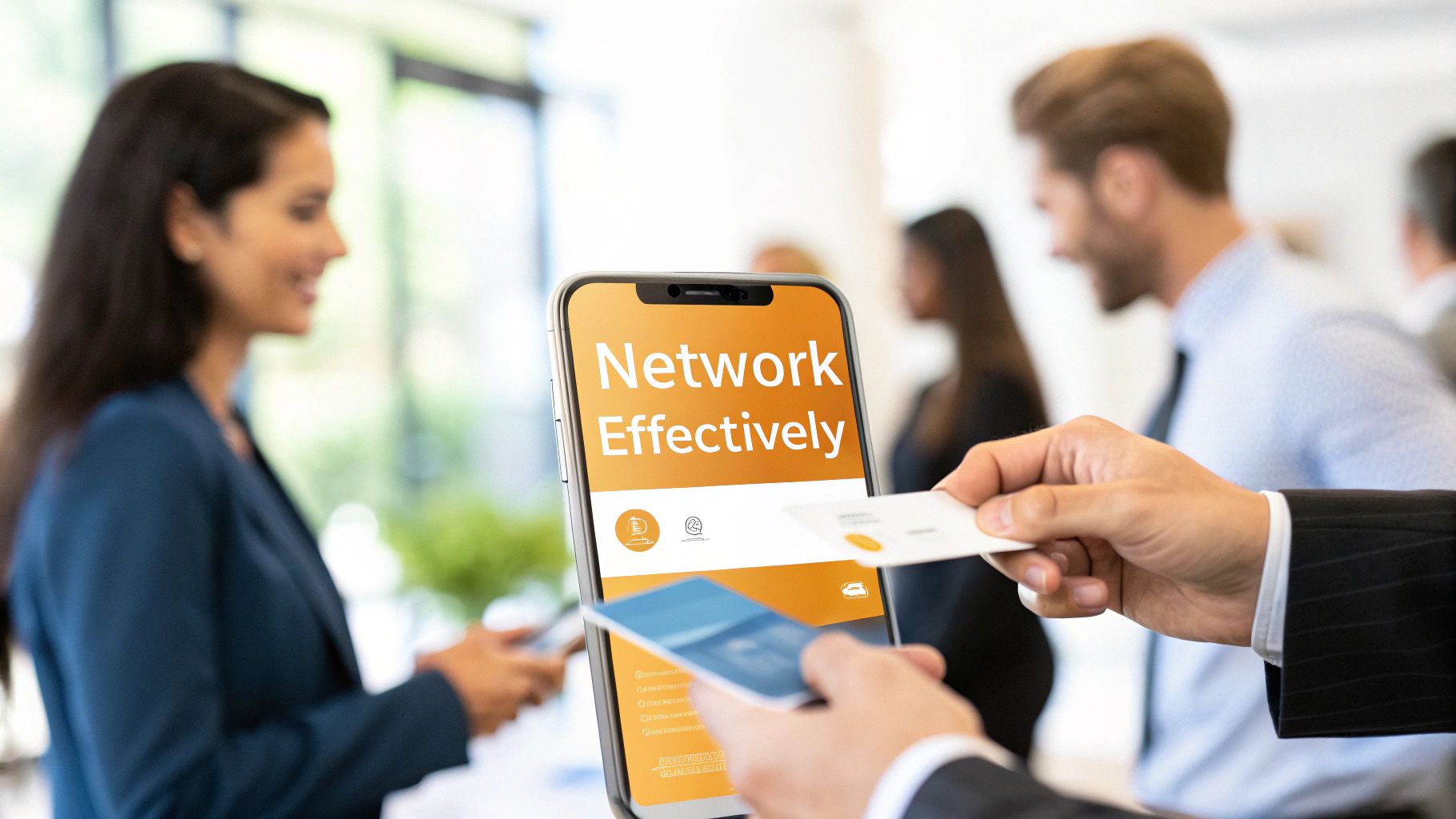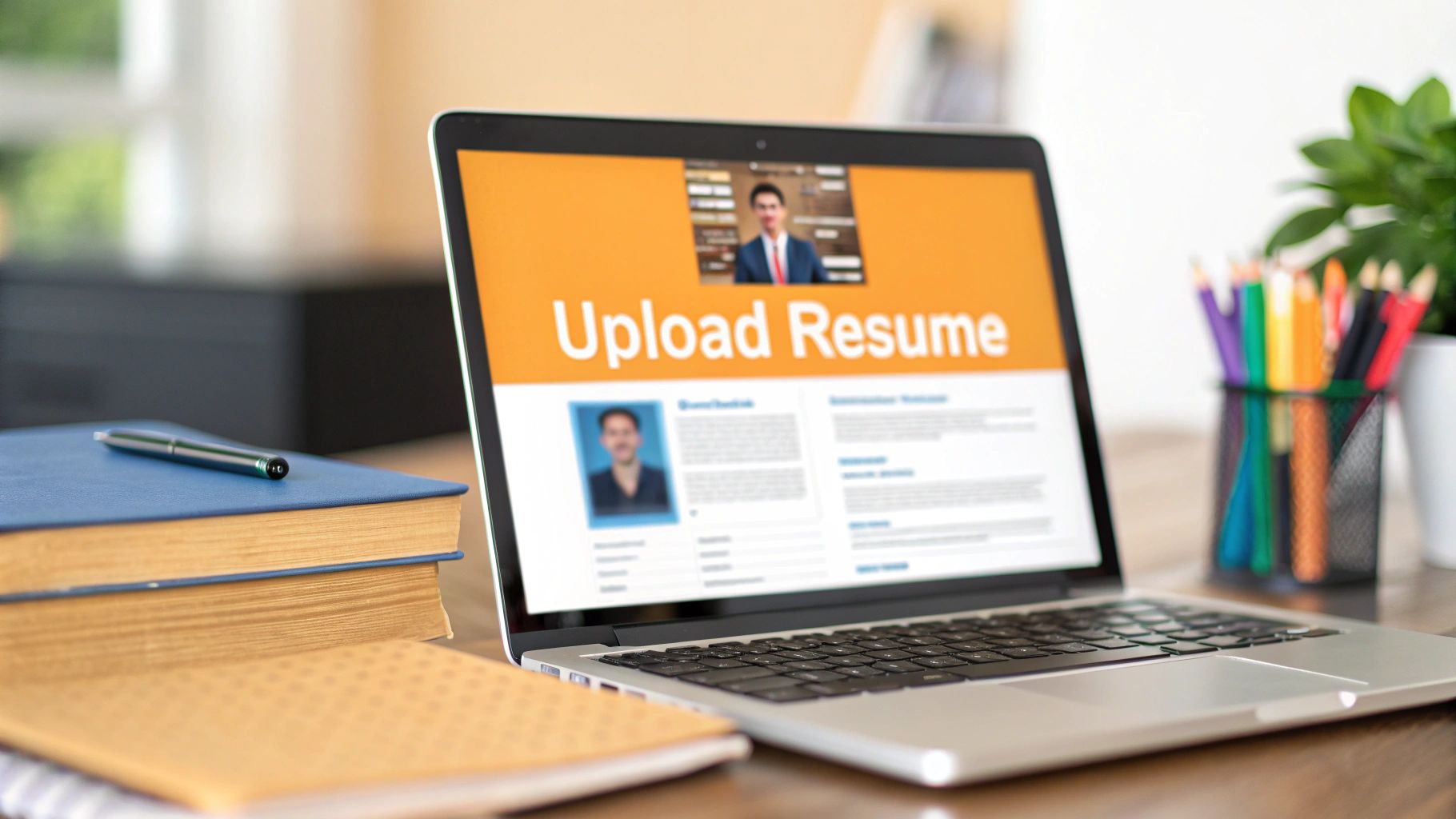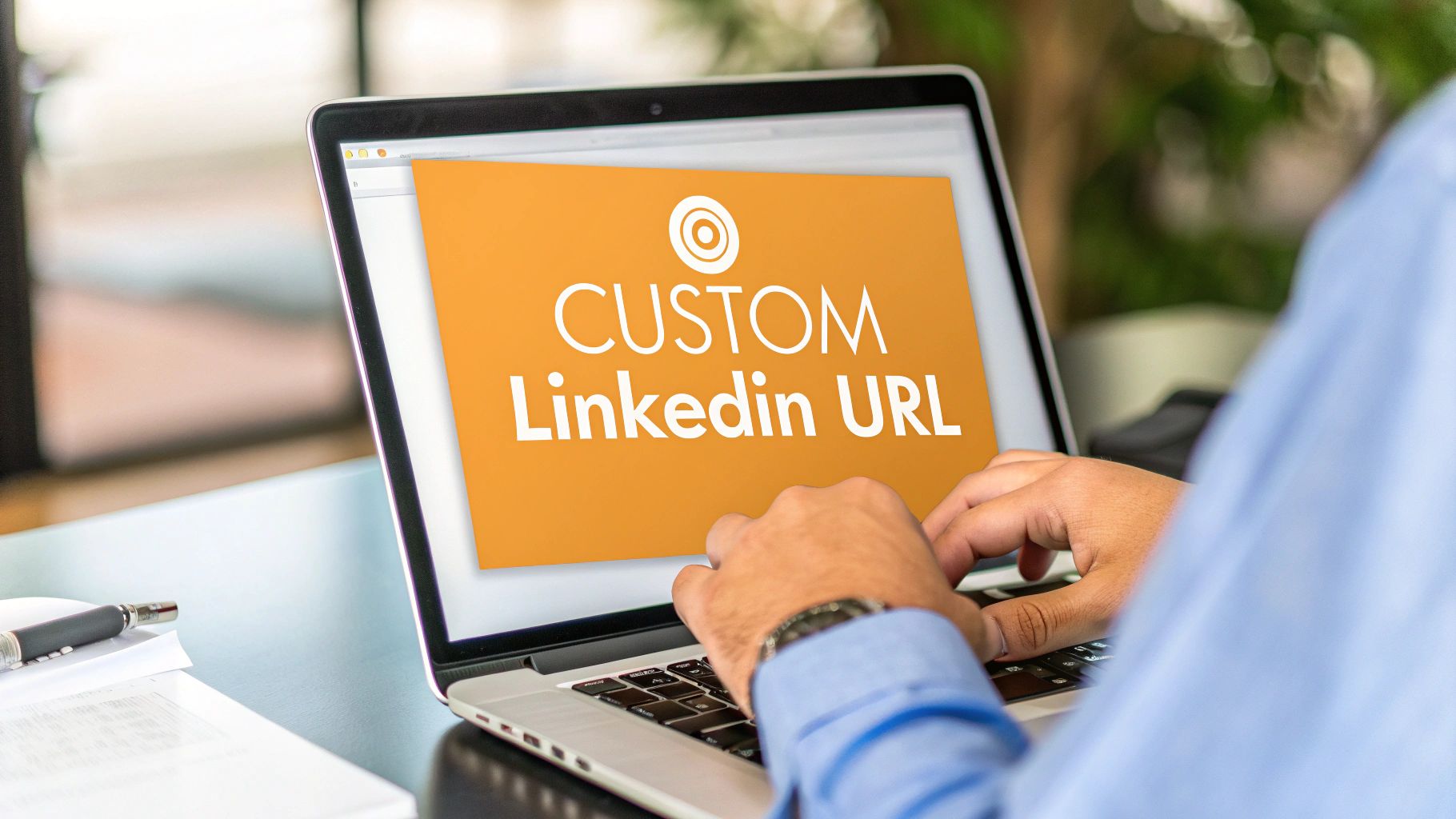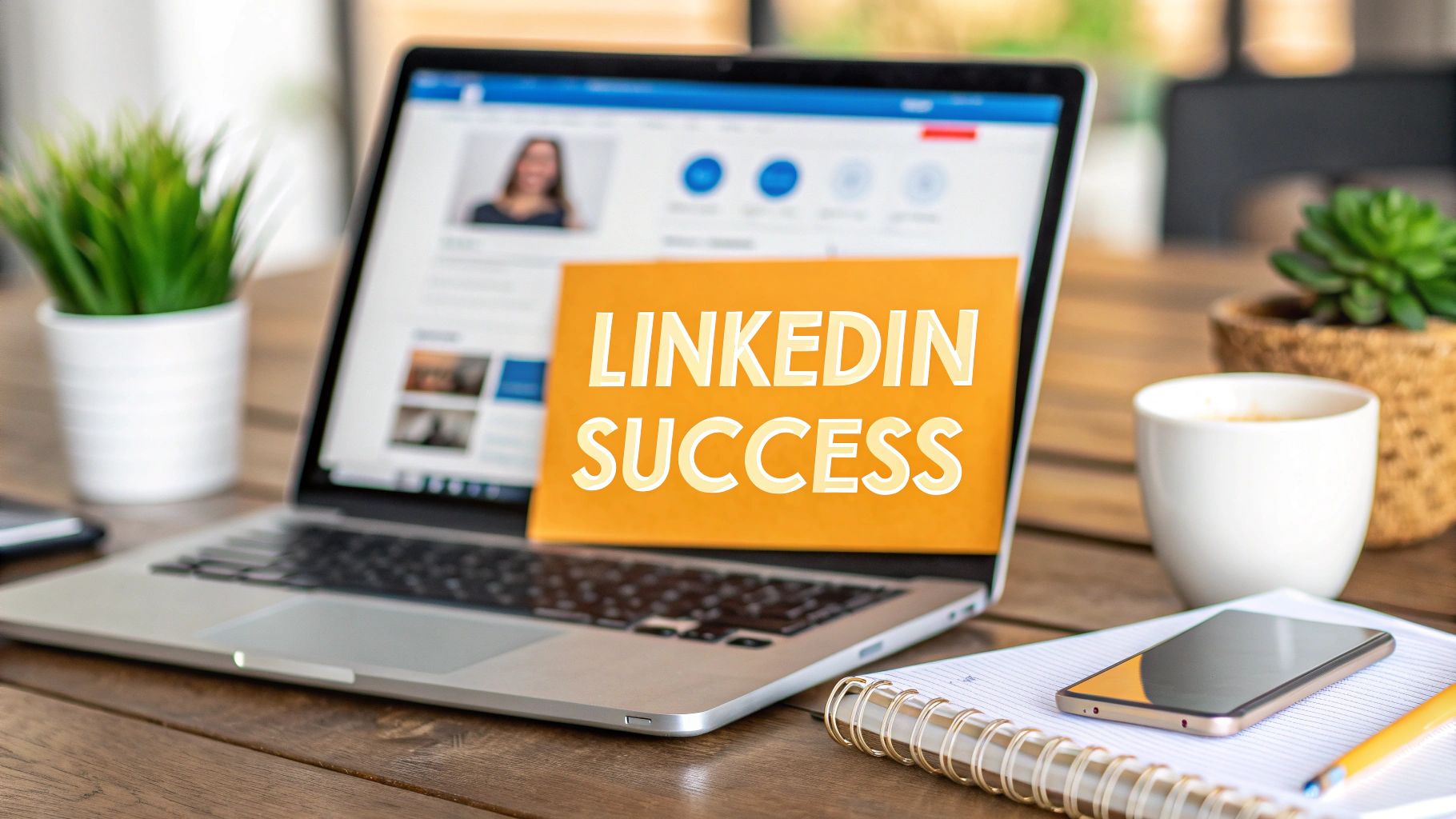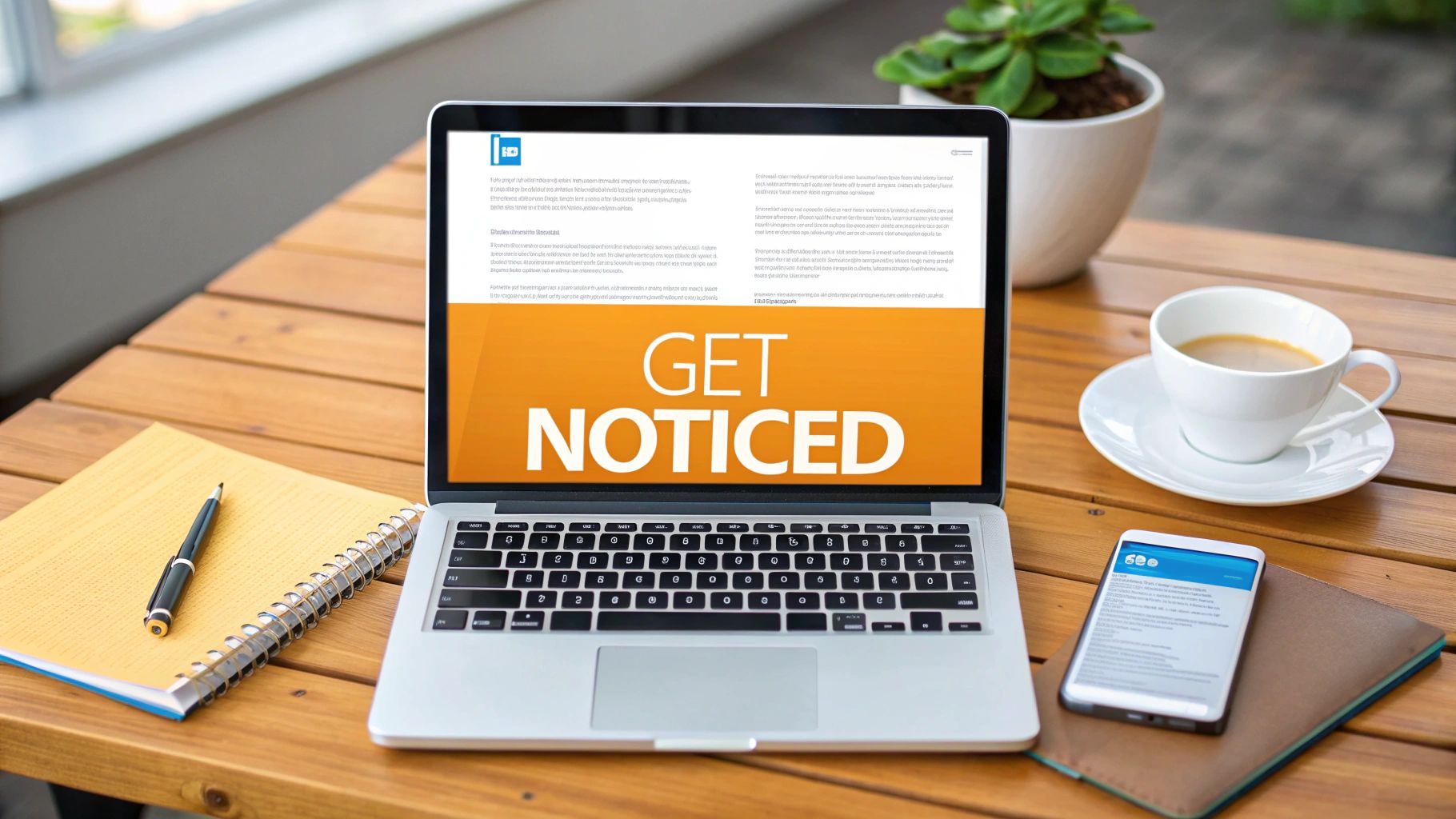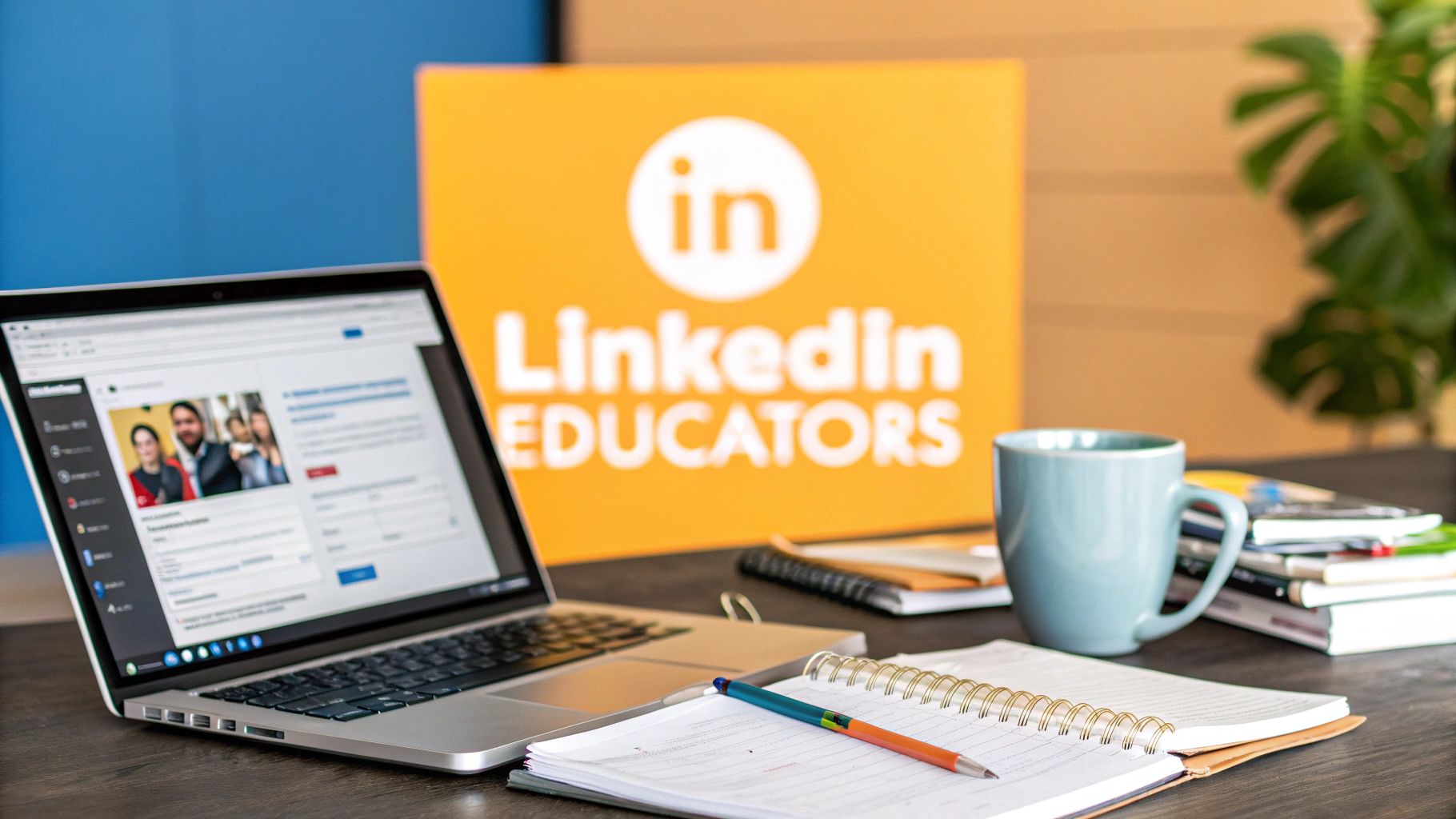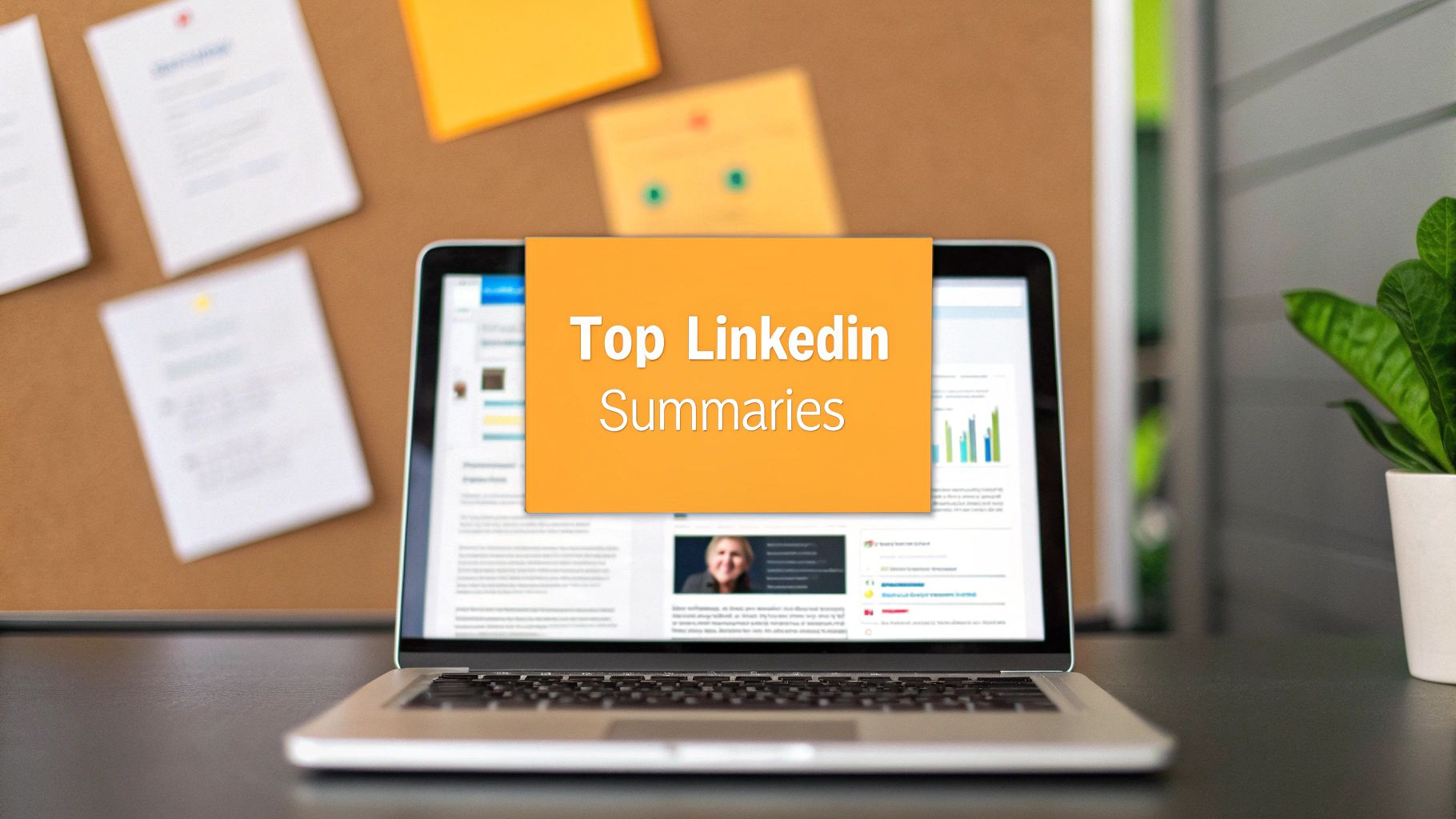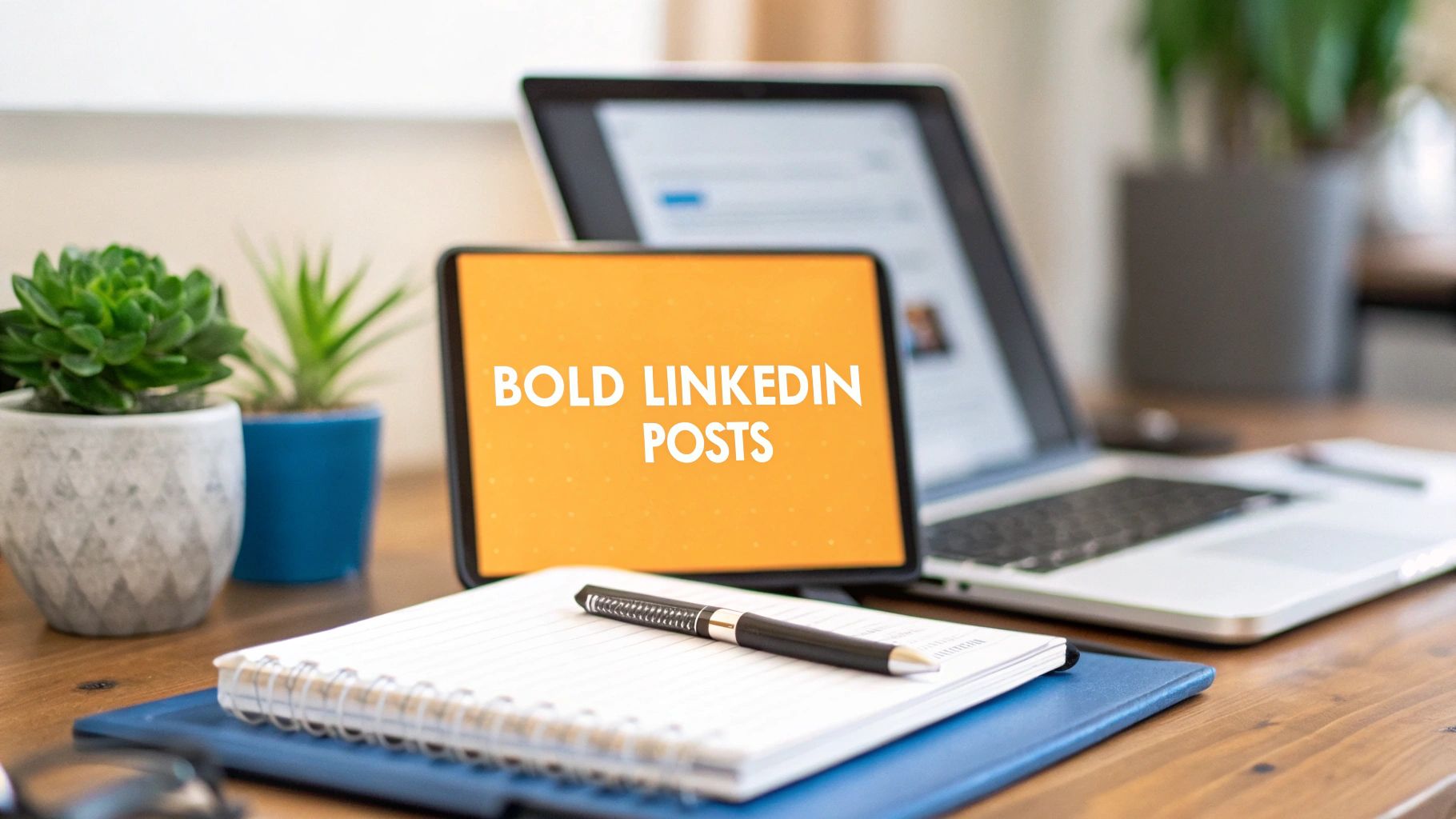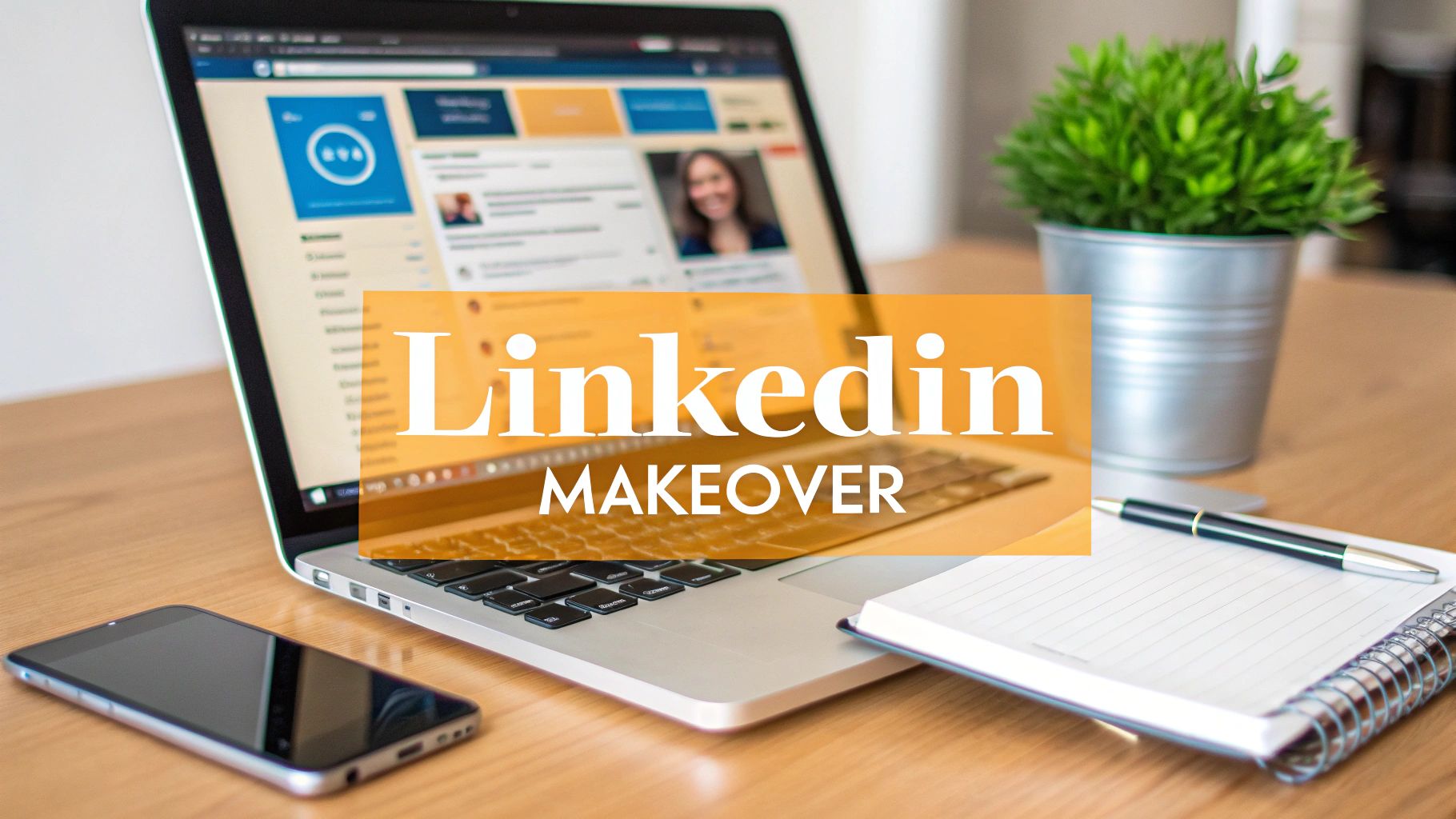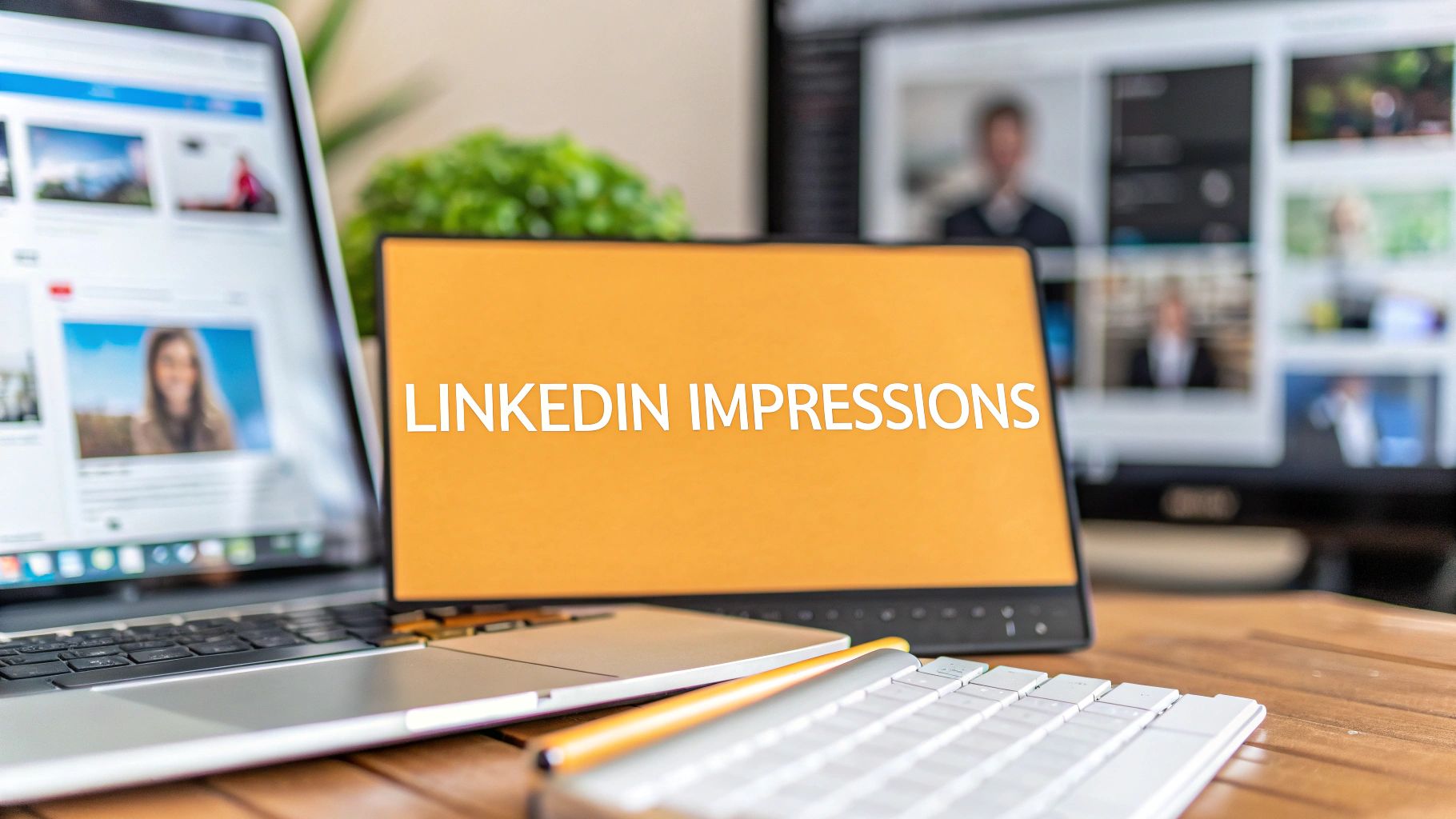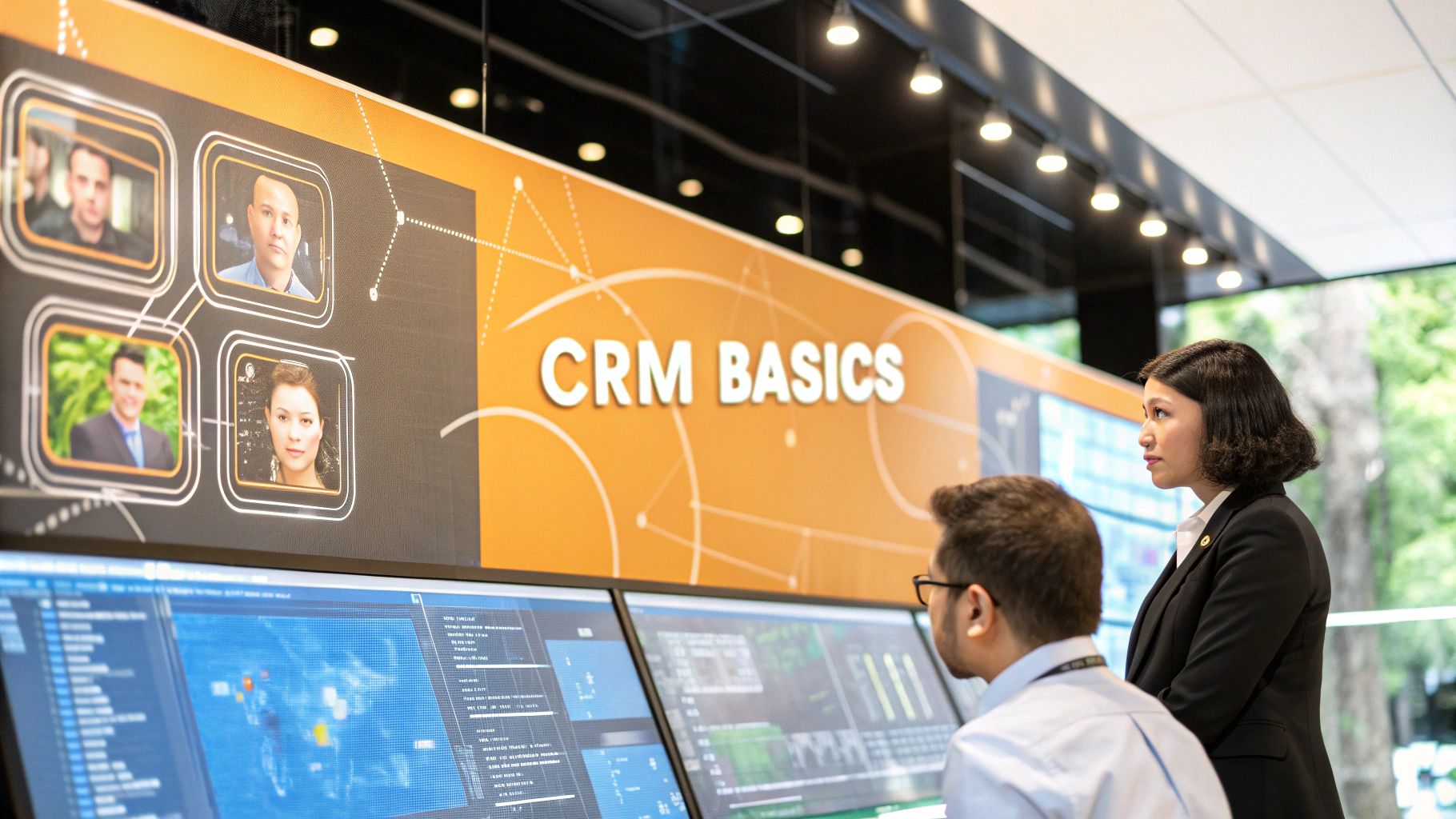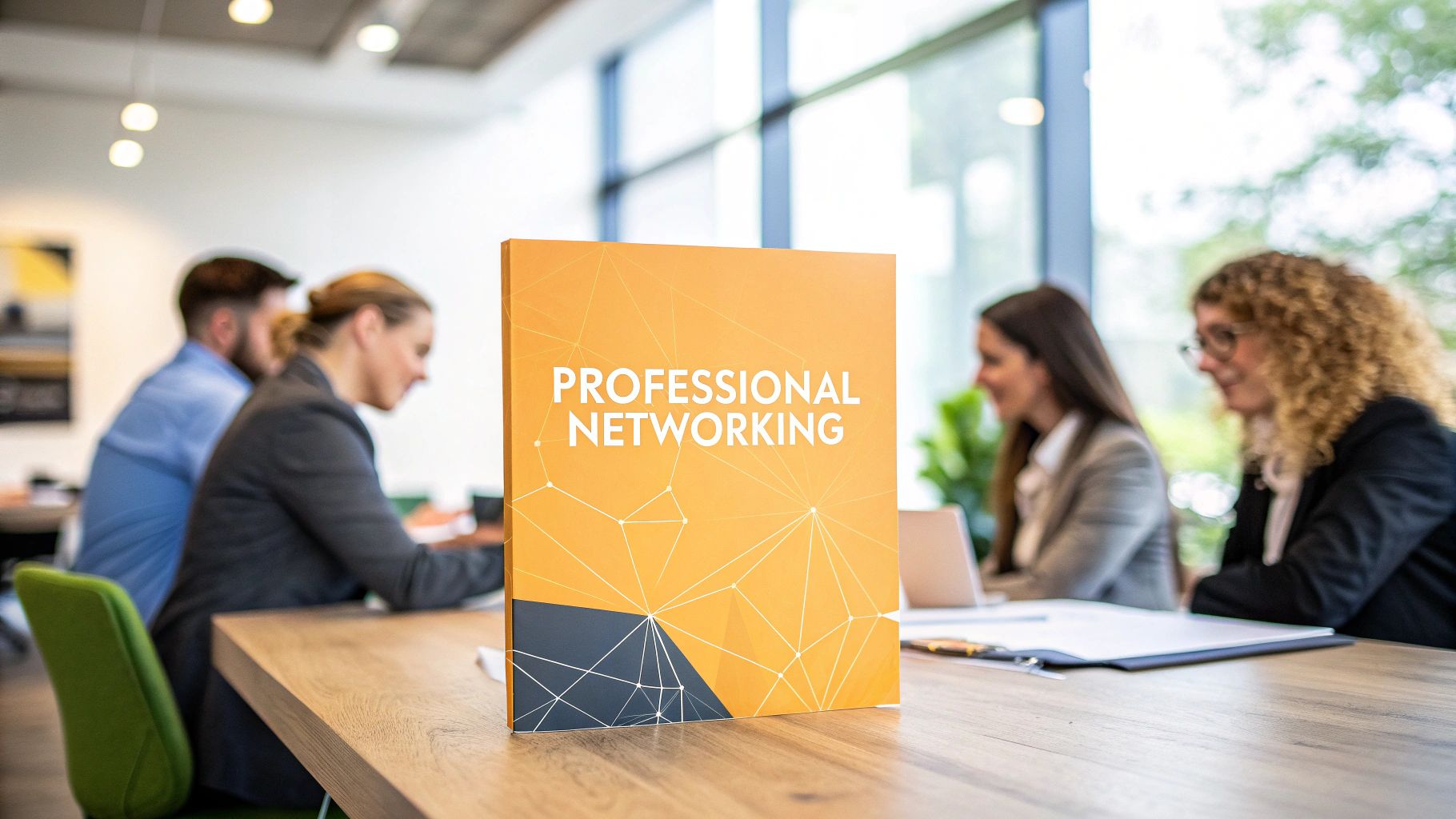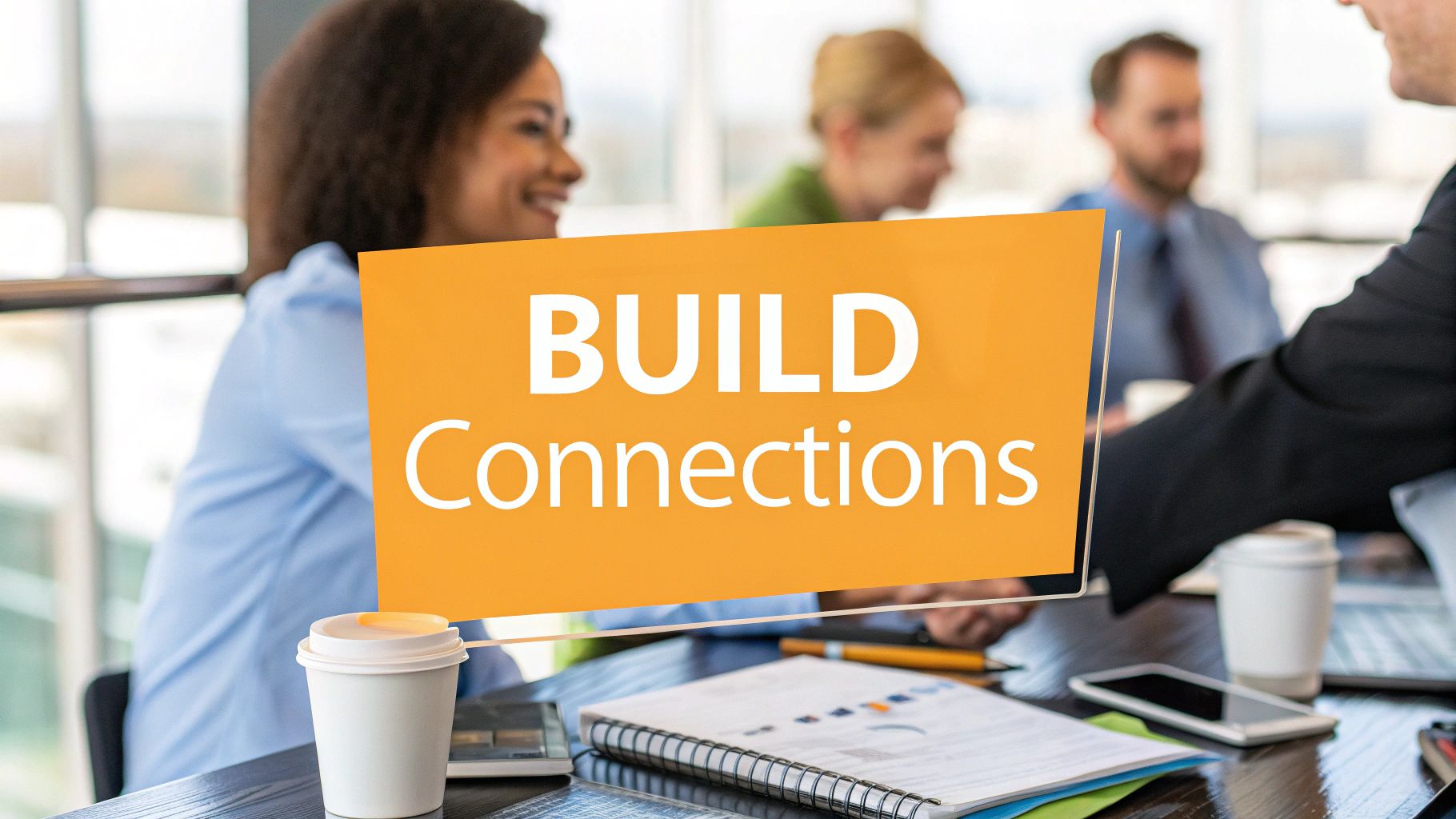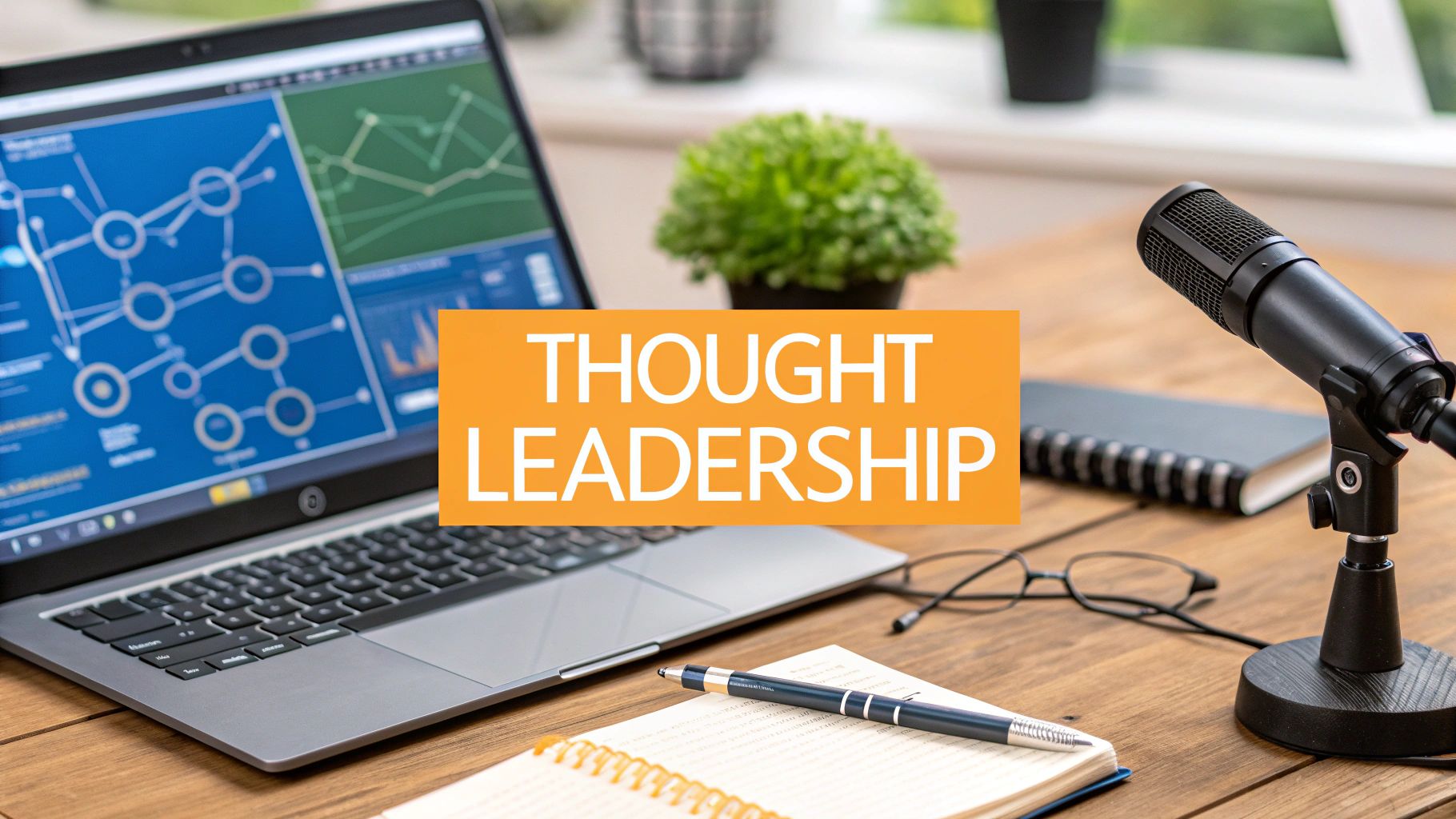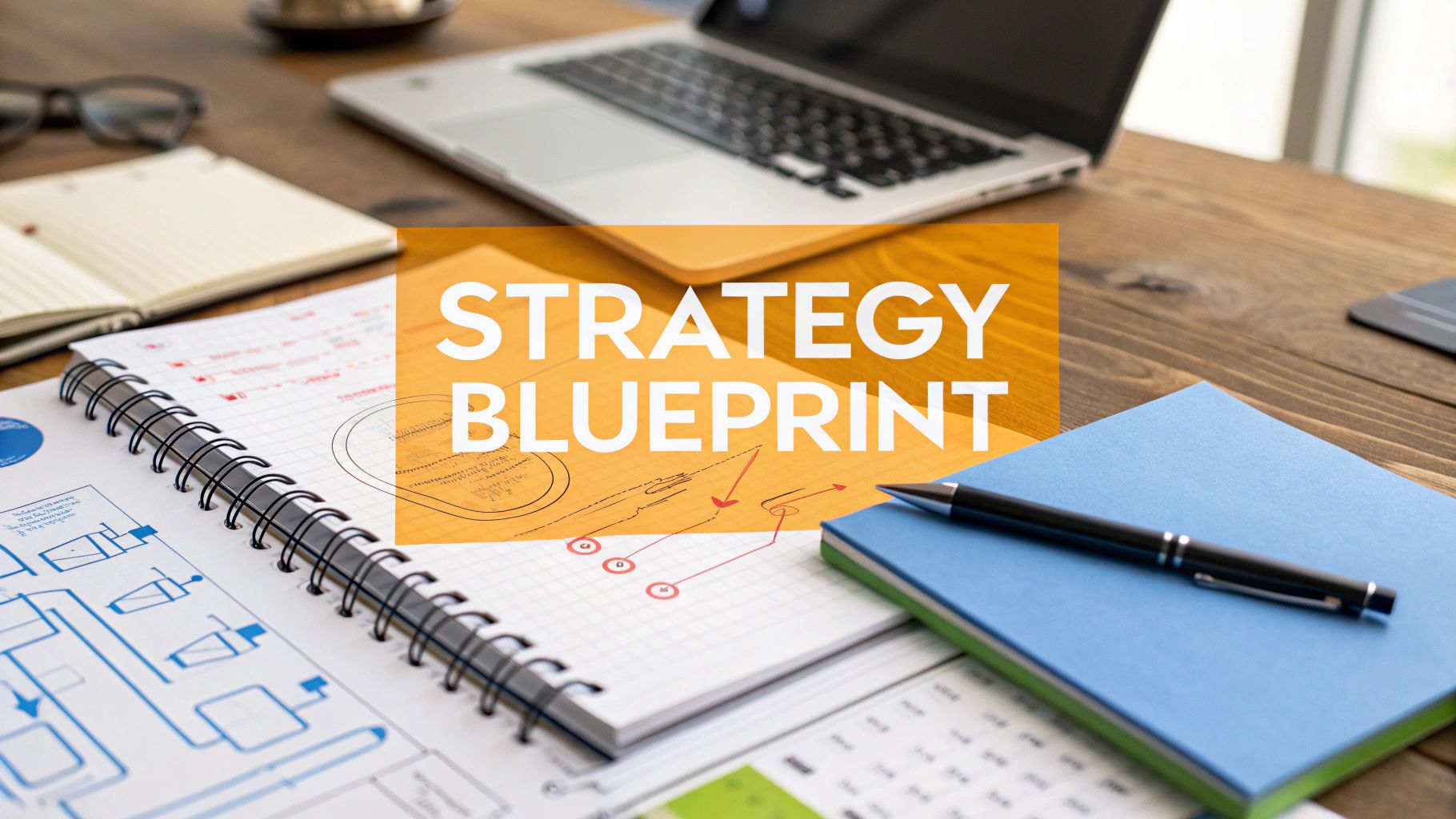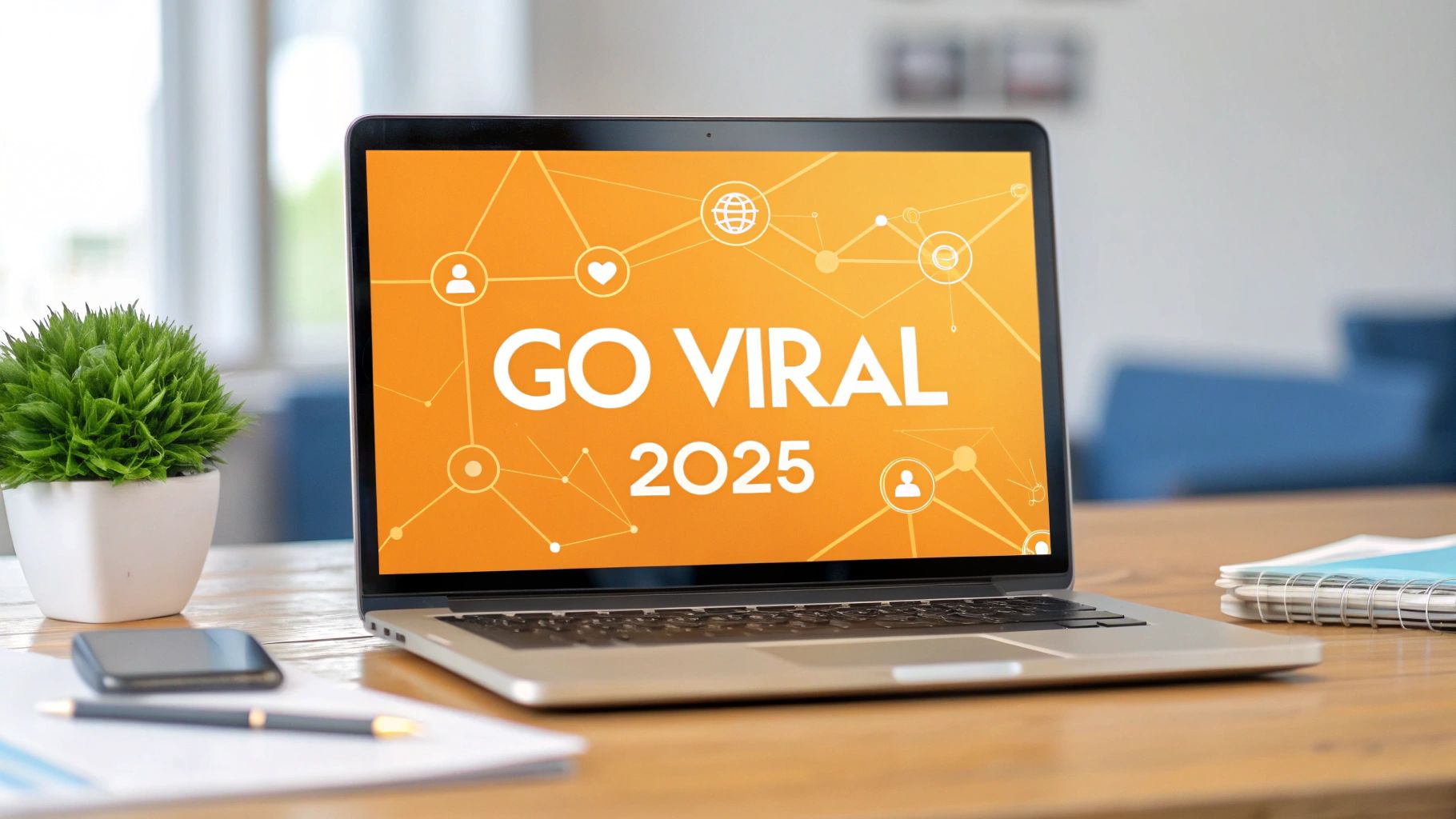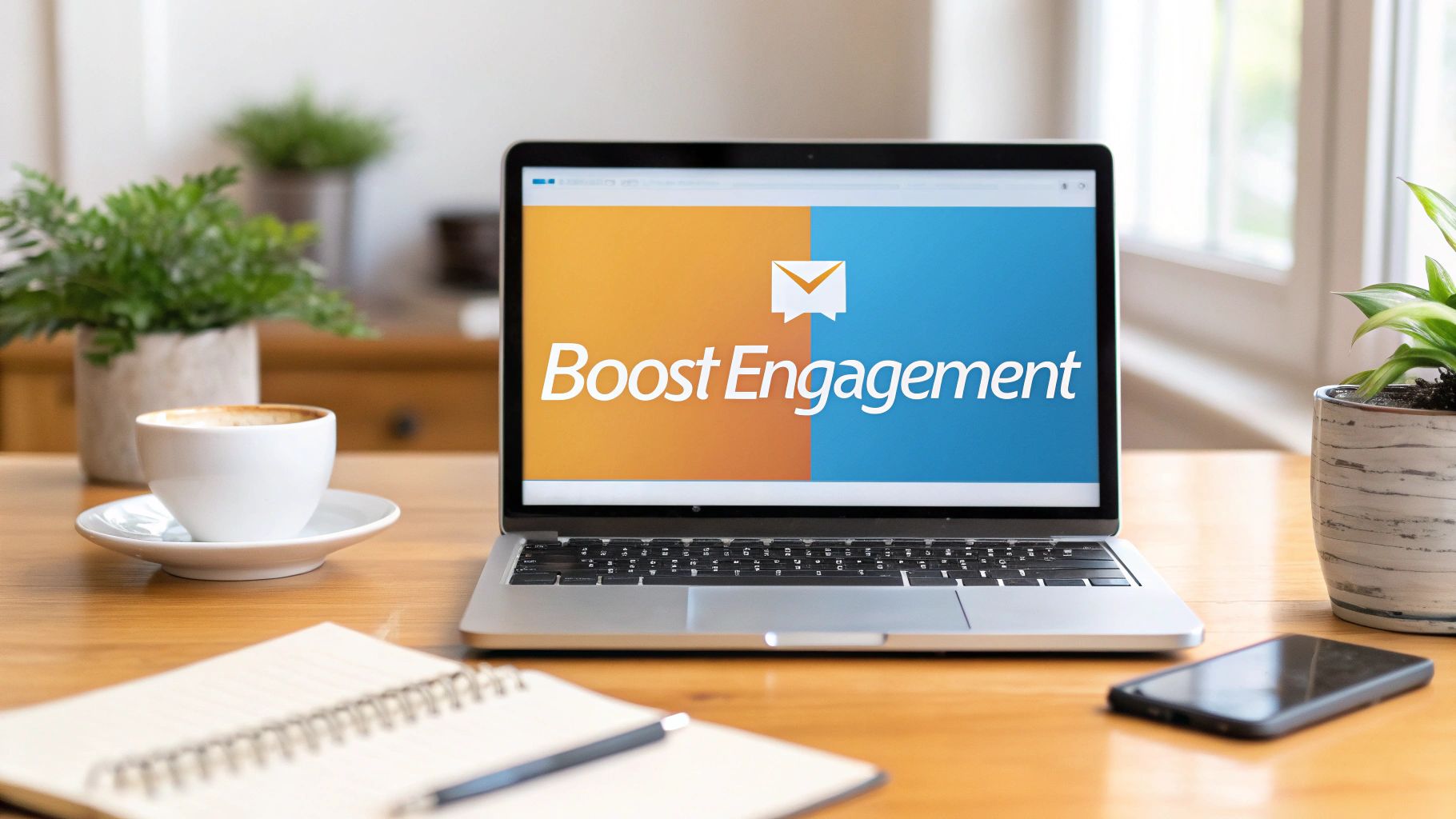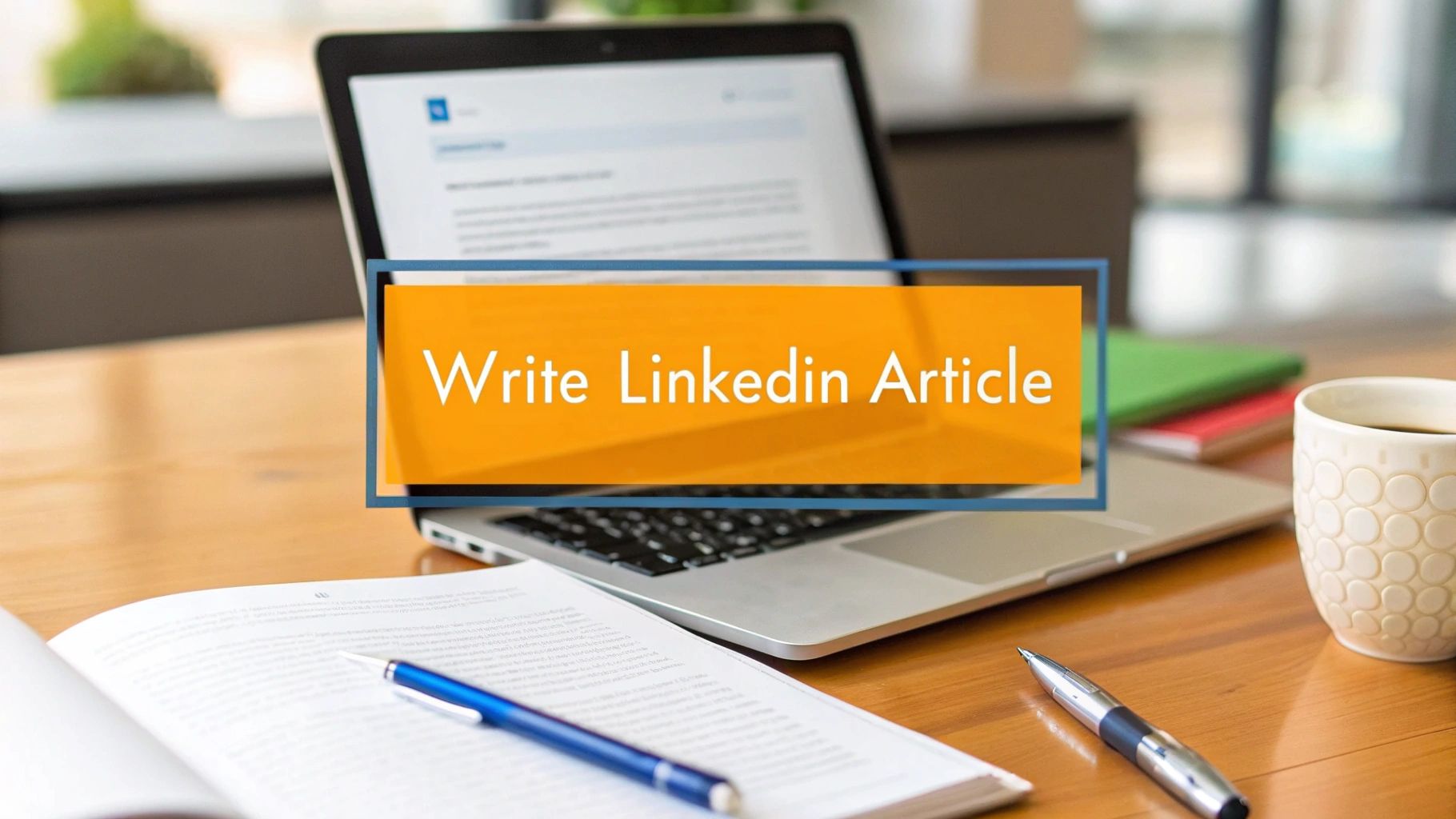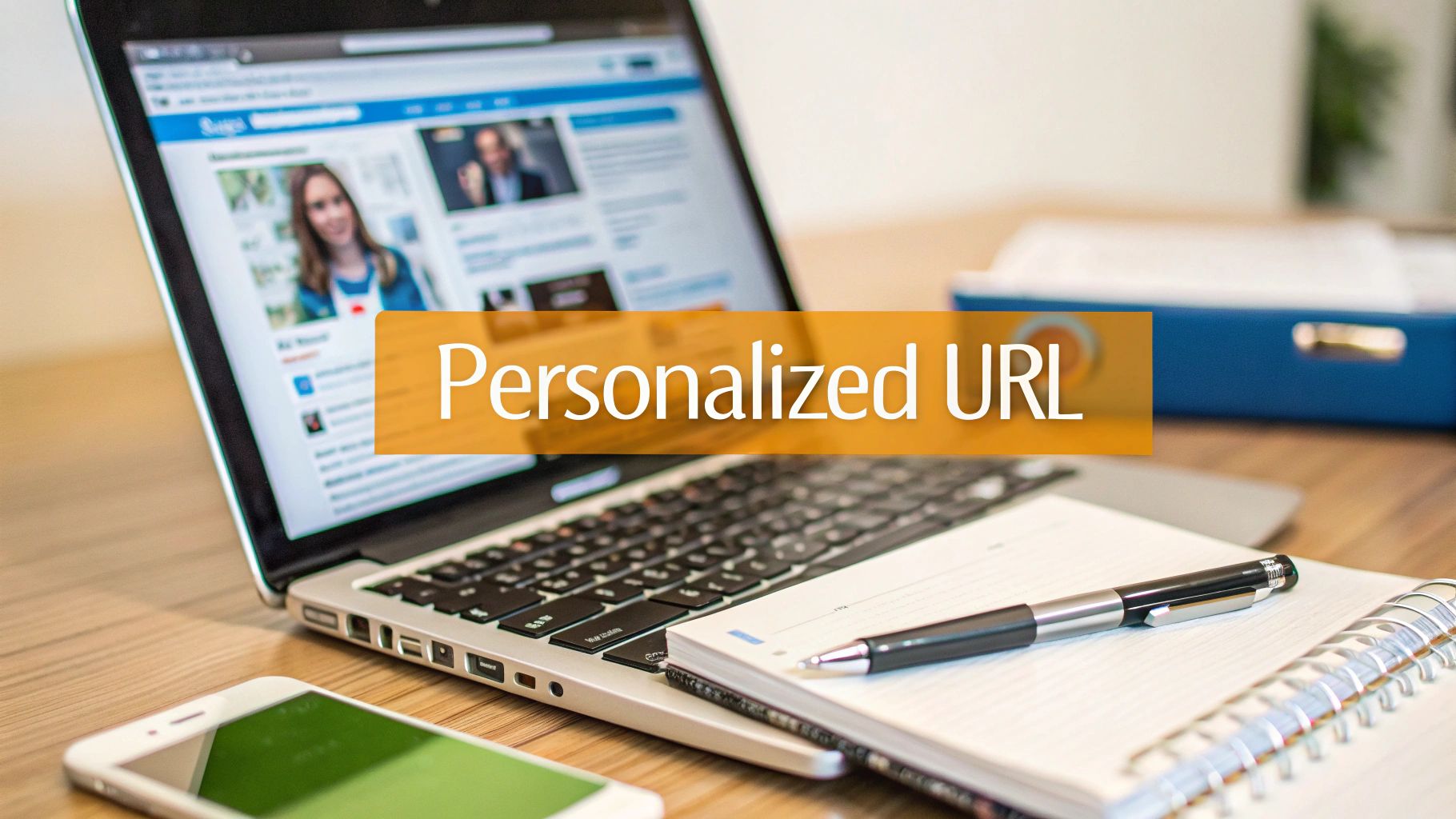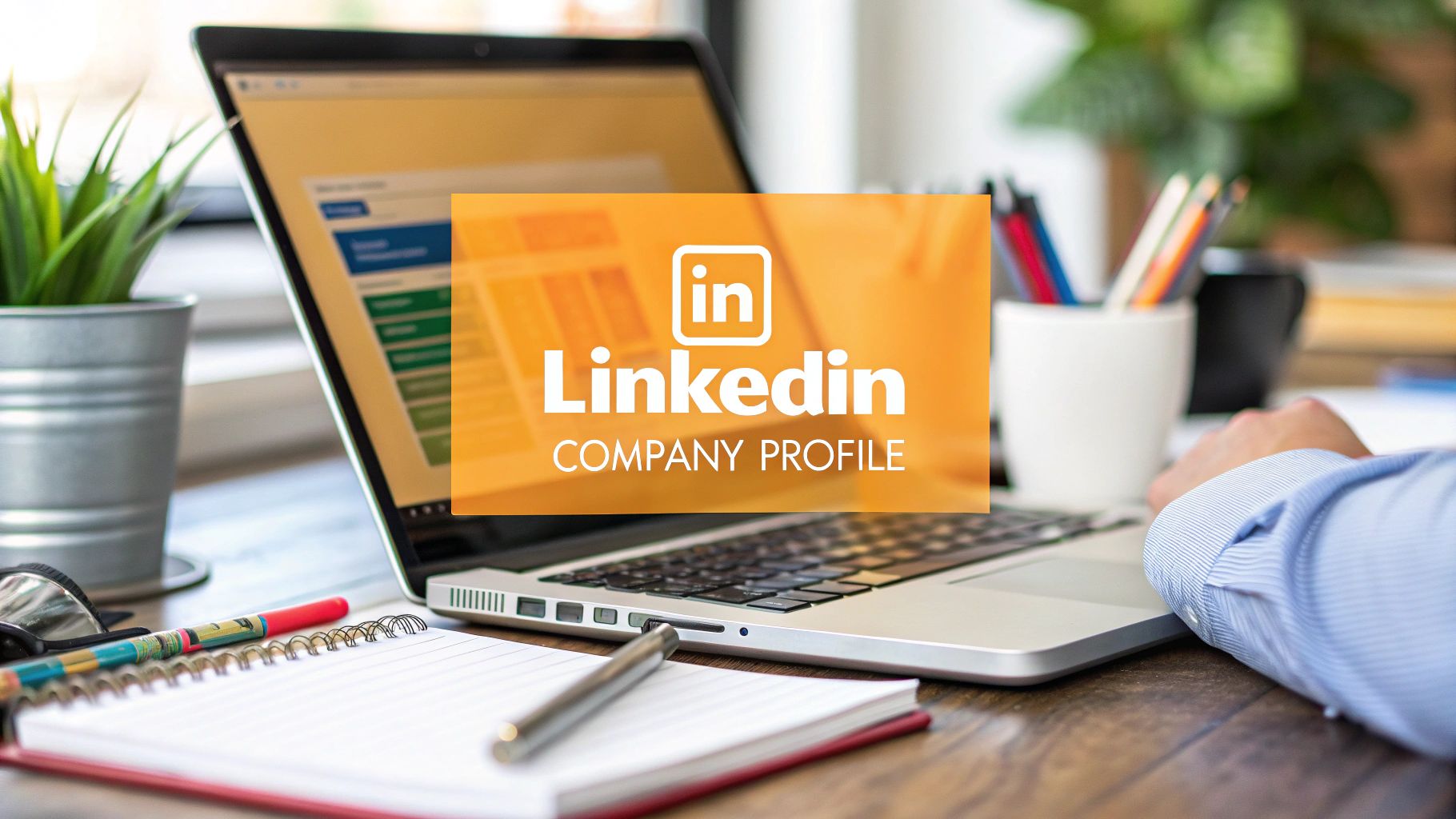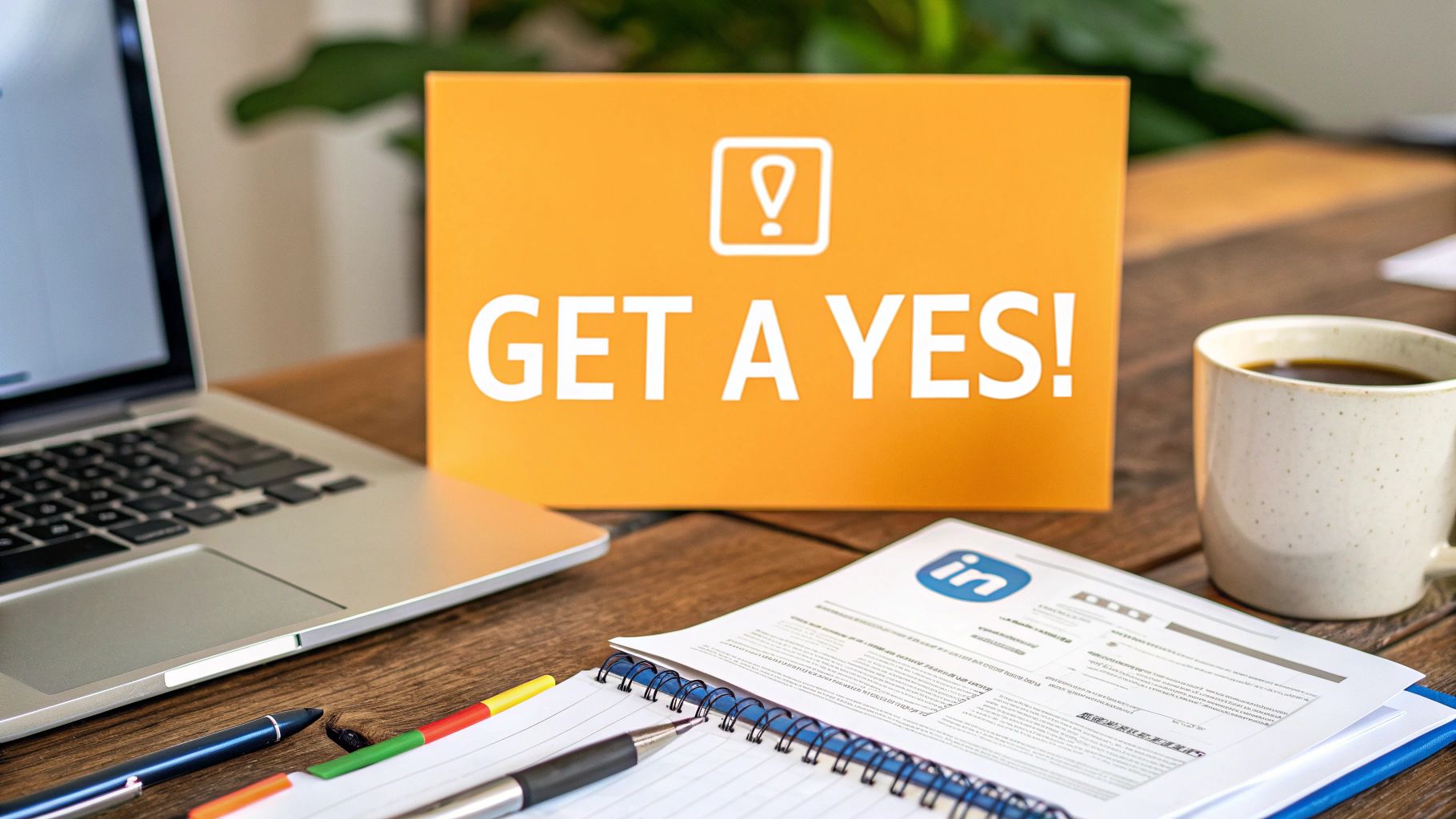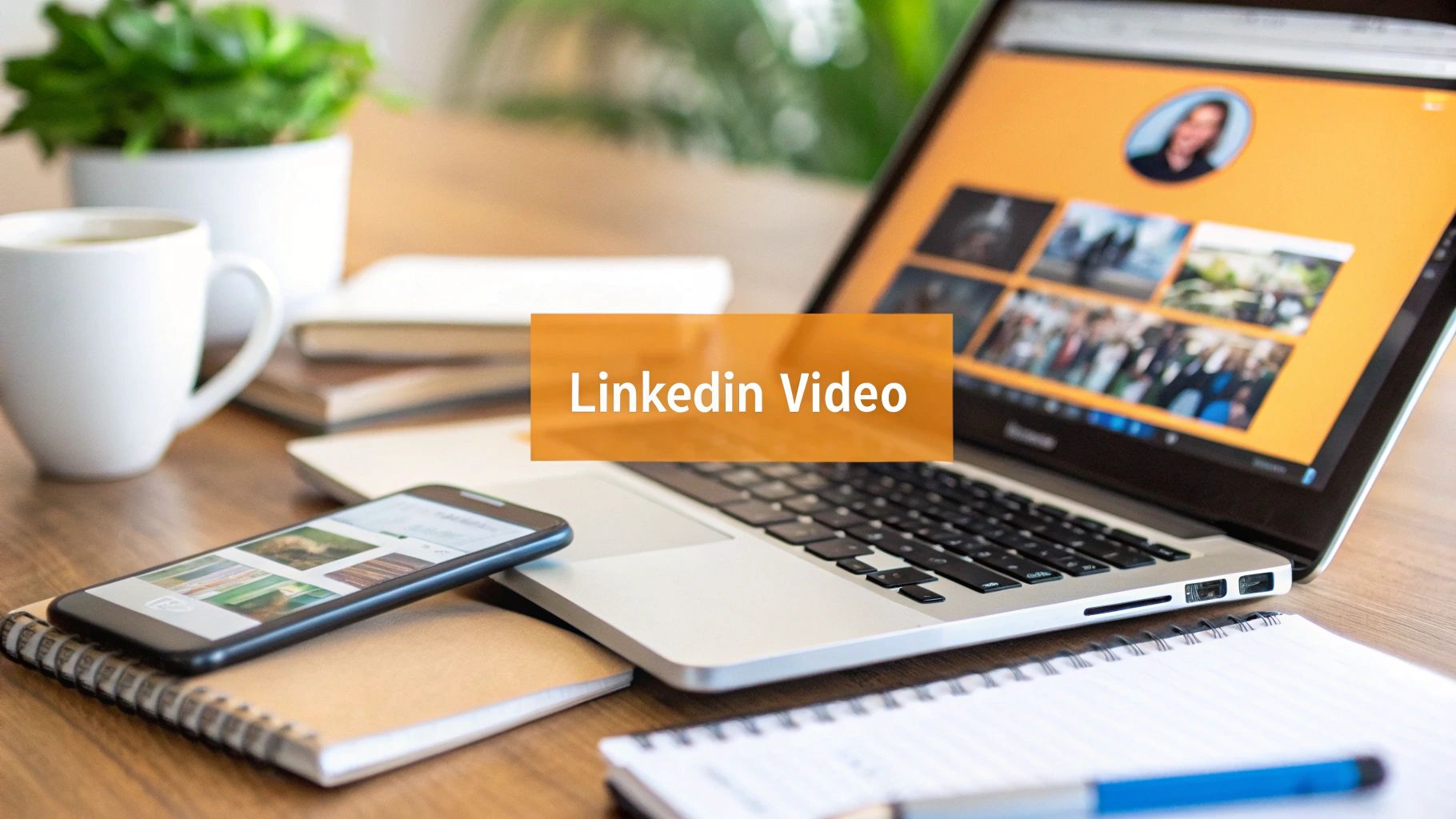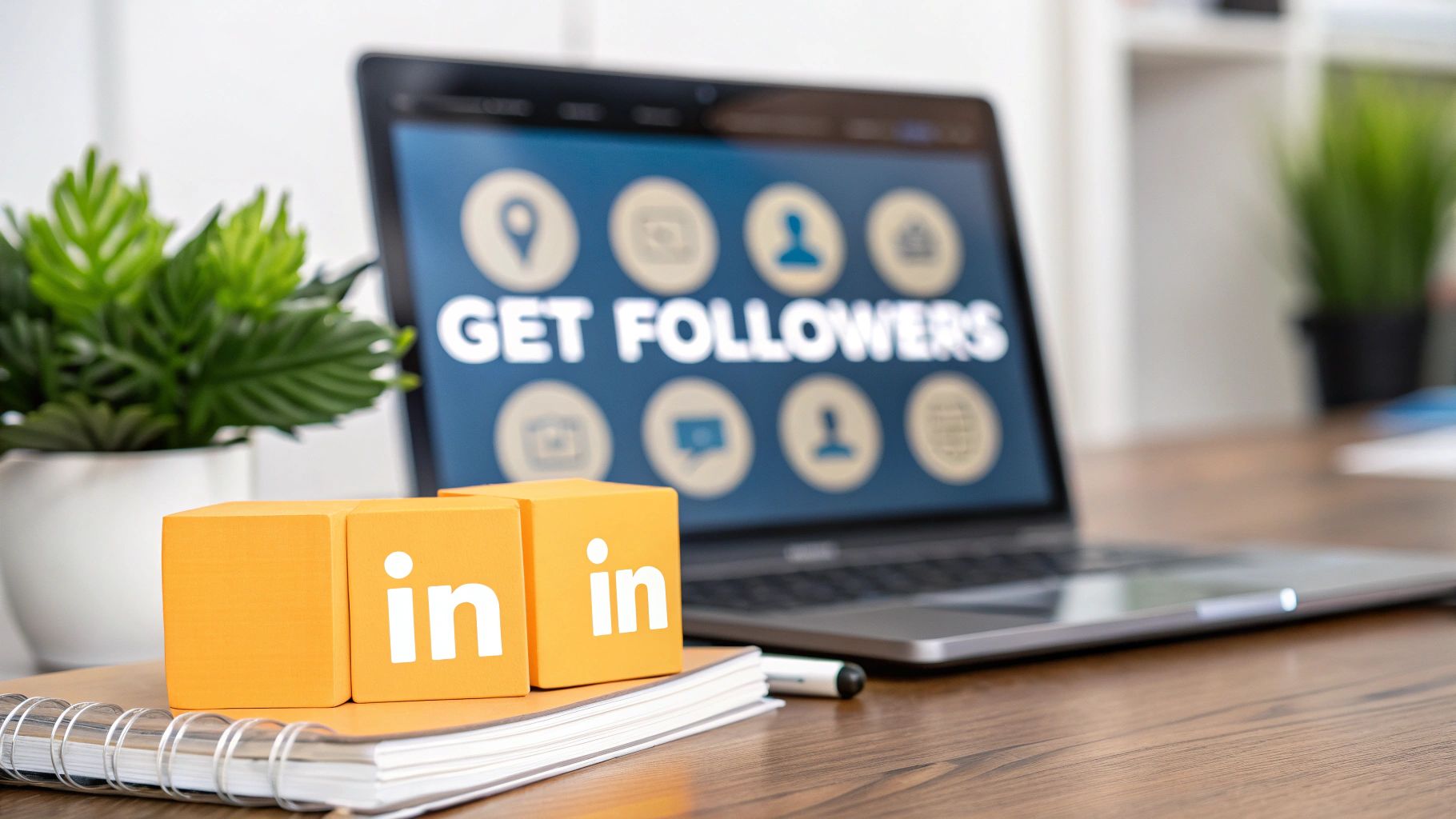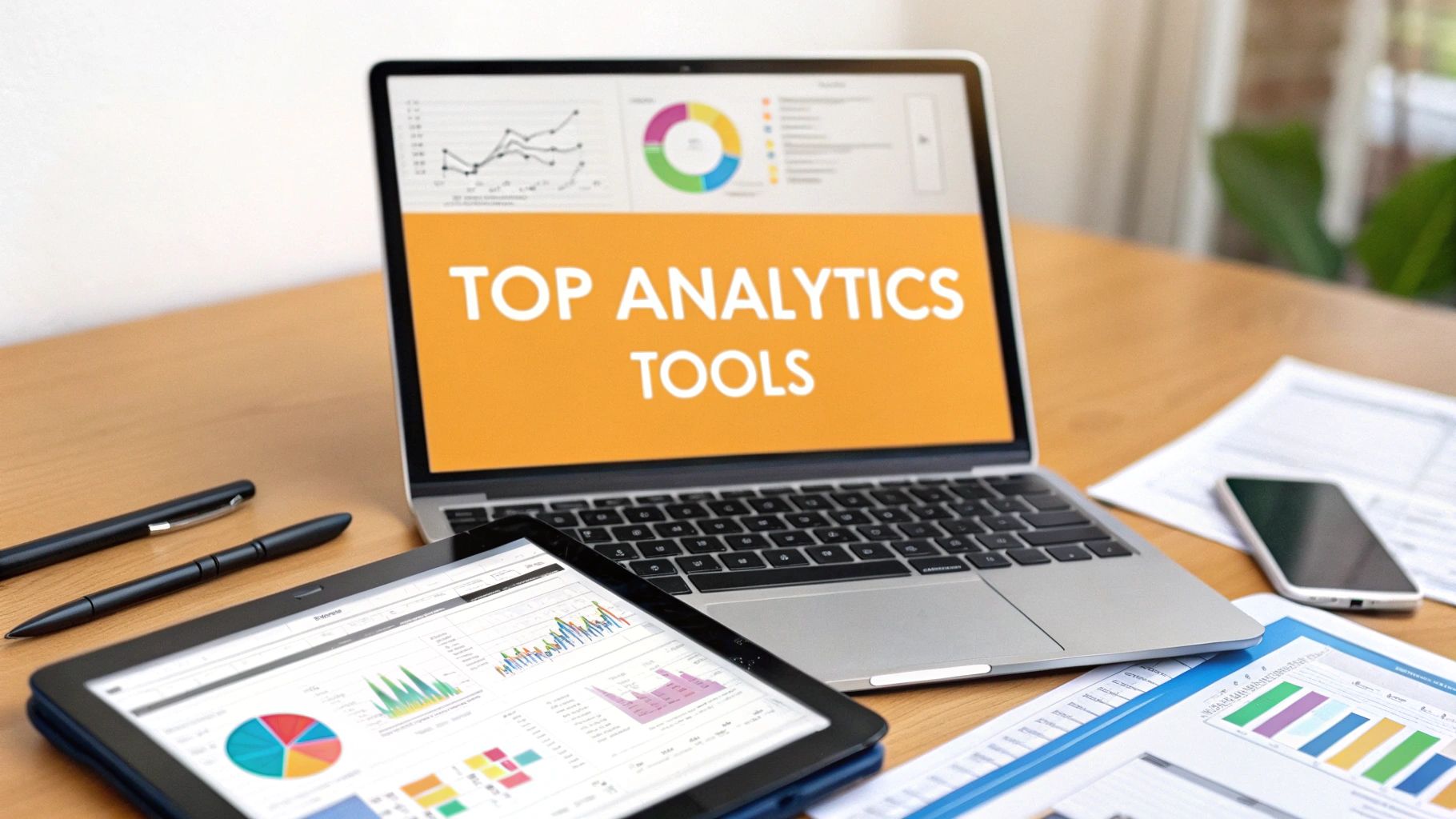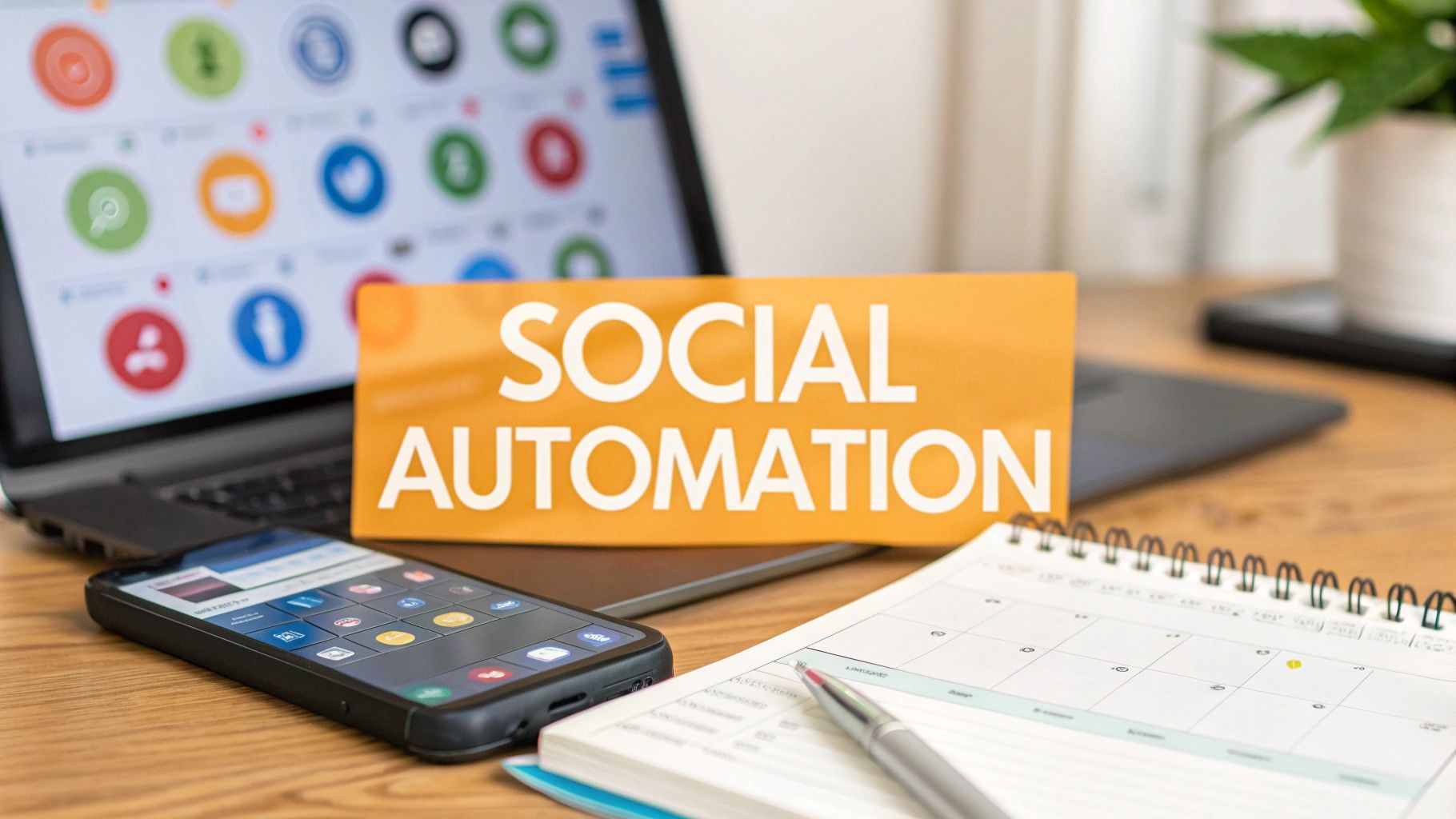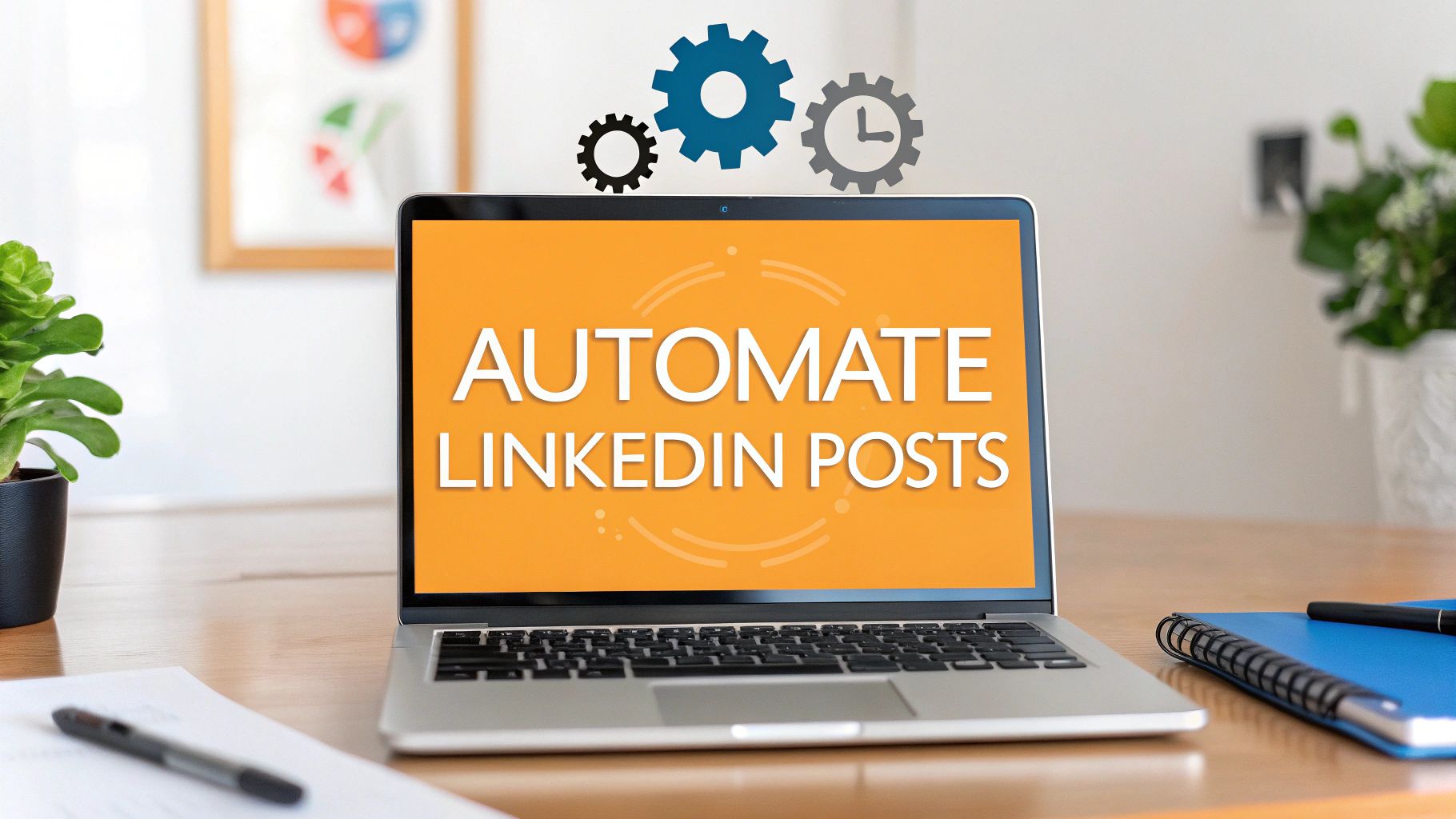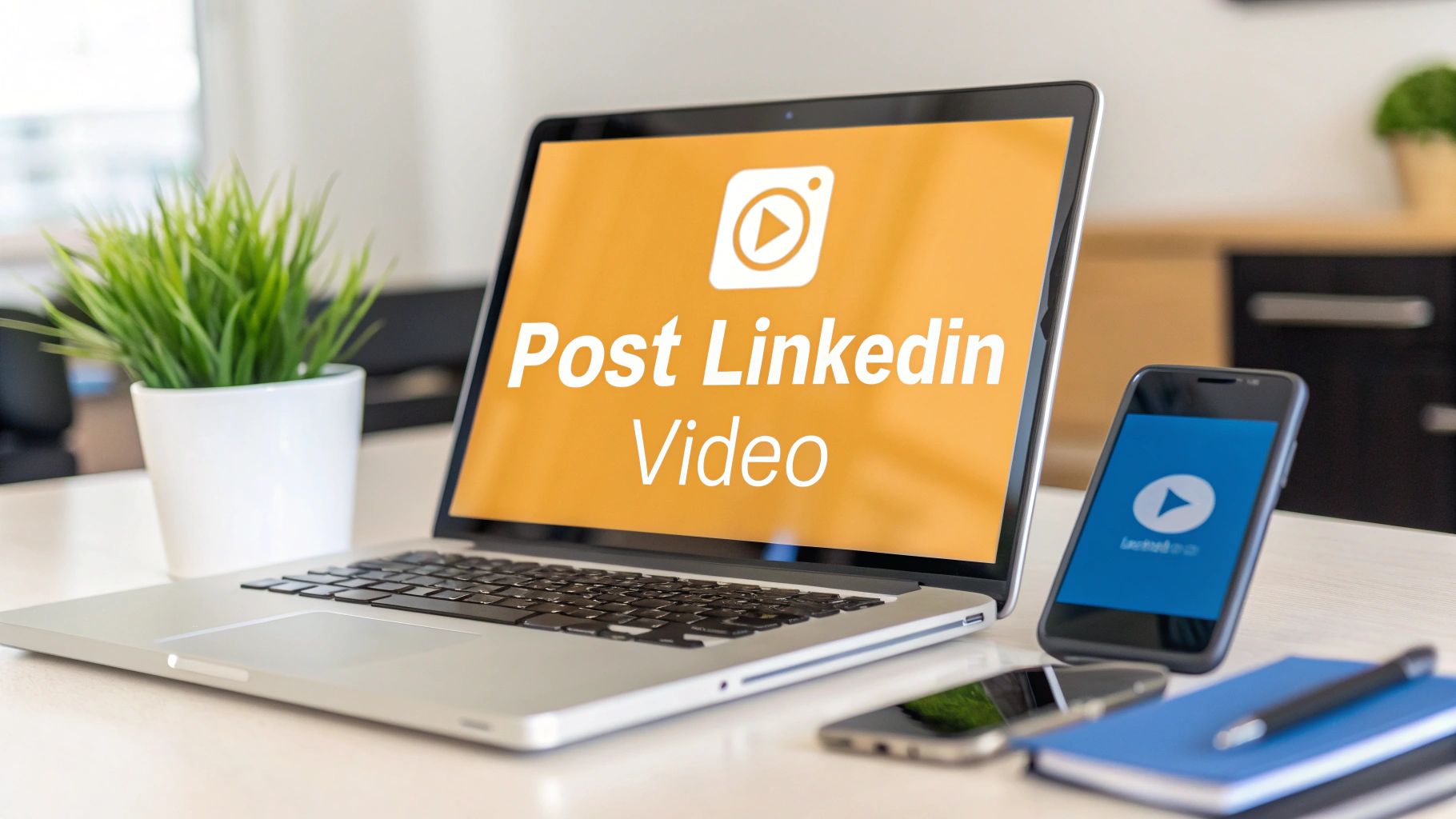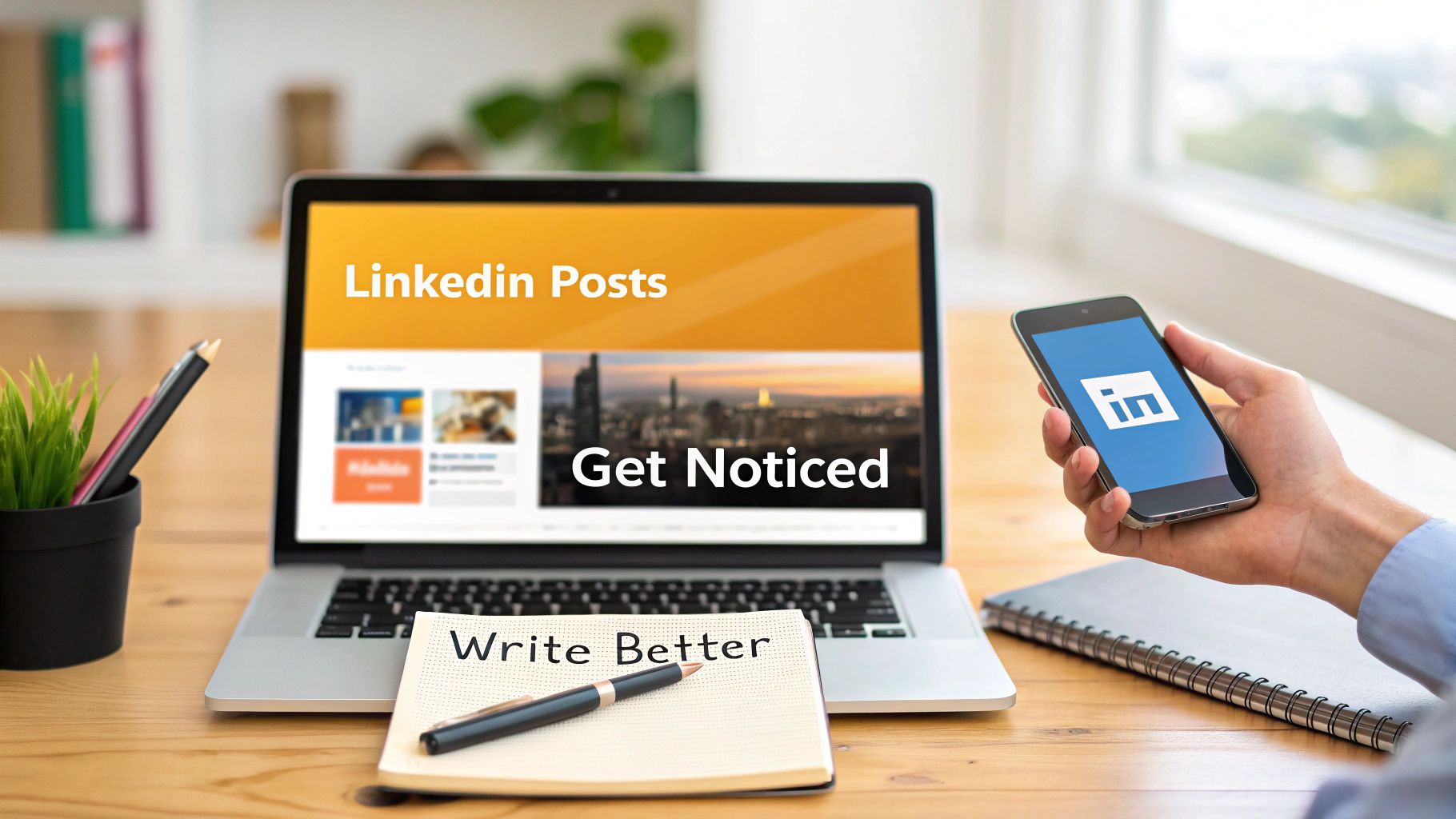Let's be real—the word "networking" can make you want to cringe. It often brings up images of stuffy rooms, forced small talk, and a pocketful of business cards you'll never look at again. But what if we thought about it differently?
Effective networking isn't about collecting contacts like Pokémon cards. It’s about building genuine, two-way relationships. It’s shifting your focus from “what can this person do for me?” to “how can I help this person?” That simple change in perspective is what cracks open doors to opportunities you'd never find scrolling through job boards.
Why a Strong Network is Your Ultimate Career Hack
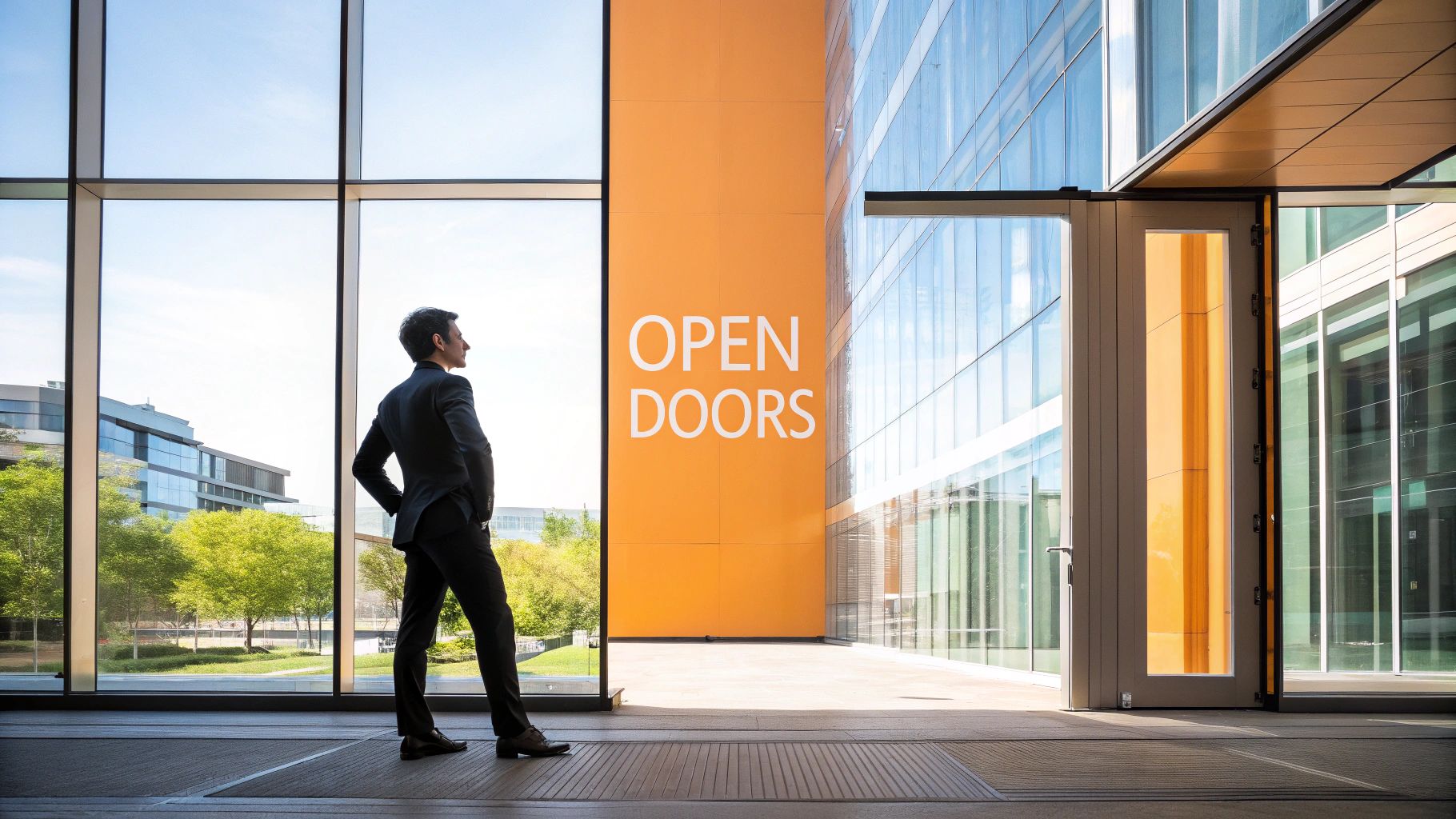
At its heart, networking is just making real connections with people who share your professional interests. It's how you tap into the "hidden job market"—that mythical place where the most exciting roles get filled before they're ever posted online.
And it’s not just a myth. The numbers back it up. An incredible 85% of jobs are filled through personal and professional connections, not by someone clicking "apply" on a website. That single statistic shows you just how powerful a well-tended professional circle can be.
The goal isn’t to meet everyone in the room. The goal is to meet the right people and build a genuine connection that can grow over time.
More Than Just a Job Hunt
A strong network is so much more than a job-finding tool. It's your personal brain trust, a source of fresh ideas, and a launchpad for new collaborations. When you stop "networking" and start building authentic relationships, you create a community that has your back.
Here's what you really gain:
- Insider Knowledge: You're the first to hear about industry shifts, new projects, and emerging trends—straight from the source.
- A Support System: Your network is there for career advice, mentorship, and crucial introductions when you hit a wall or are ready for a change.
- Greater Visibility: When you have a solid circle of contacts, your name comes up in conversations you're not even in. You become a known and trusted entity in your field.
Getting a handle on what professional networking truly means is the first, most important step. It’s less of a rigid process and more of a mindset rooted in curiosity and generosity.
To put it all into perspective, here's a quick look at the different channels available and the mindset you need to succeed in each.
Modern Networking At a Glance
| Networking Channel | Best For | Key Mindset |
|---|---|---|
| In-Person Events | Building immediate rapport and reading body language. | "I'm here to listen and learn, not just talk." |
| Researching contacts and maintaining long-term connections. | "I'm building a professional story, not just a resume." | |
| Virtual Meetups | Accessing global communities and niche interest groups. | "Geography doesn't limit my community." |
| Informational Interviews | Gaining deep insights and personalized career advice. | "I'm here to ask thoughtful questions, not ask for a job." |
Ultimately, the best approach is a mix of these channels, tailored to your own goals and personality. The common thread is always genuine interest in other people.
Craft Your Digital Handshake on LinkedIn
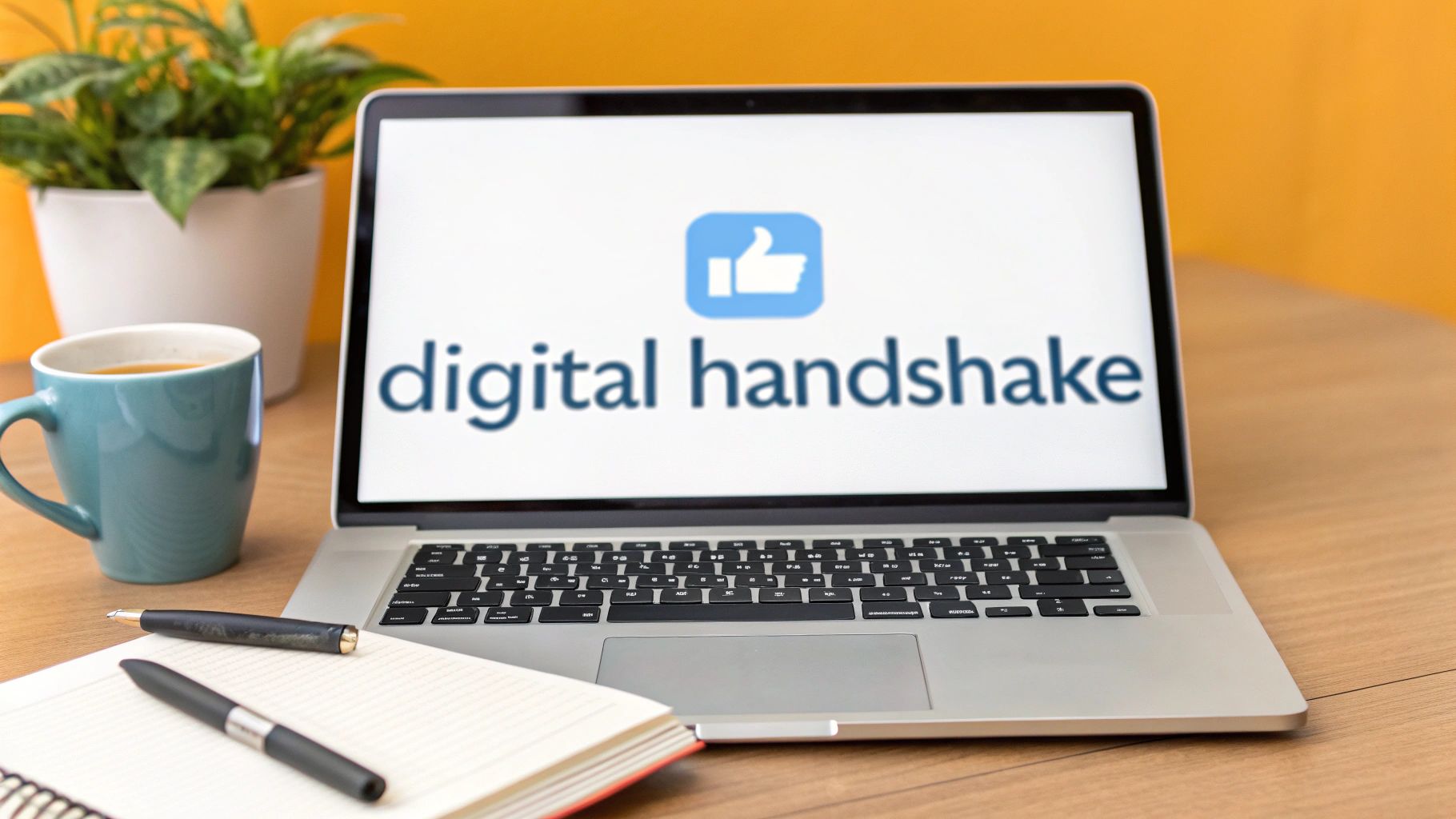
Let's be real: your LinkedIn profile is working for you 24/7. It's your digital handshake, your online billboard, and often, your first impression. But is it telling the right story? If it’s just a boring list of past jobs, you’re missing a huge opportunity.
You need to shift from a static resume to a magnetic personal brand. It starts with a simple tweak to your headline. Instead of "Marketing Manager," try something with a little more punch, like "Marketing Manager Driving B2B Growth Through Content & SEO." See the difference? One is a label; the other is a value proposition.
Beyond the Profile Basics
Okay, so your profile is looking sharp. Now what? The real networking magic happens when you actually do something. With LinkedIn now home to over 1 billion users, you can’t just sit back and wait for people to find you. Consistent, genuine interaction is how you stay on the radar.
Don't just take my word for it—the platform has led to 35.5 million hires. People are getting jobs and making connections here every single day.
When you do reach out, please, please personalize your connection requests. Nothing screams "I'm just trying to hit a quota" like a generic invitation. They’re easy to send and even easier to ignore.
My go-to move: Always find a specific reason to connect. Mention a post they wrote, a comment they made, or a shared connection. It shows you've actually taken a moment to see who they are.
Here’s a simple script that works wonders:
"Hi Alex, I really enjoyed your recent article on sustainable supply chains. Your point about last-mile logistics was fascinating. I'd love to connect and follow your work."
This kind of thoughtful approach turns a cold outreach into the start of a real conversation. It's not just about adding another number to your connection count; it’s about learning how to grow on LinkedIn and build your brand for the long haul.
Of course, all this effort is wasted if your profile isn't ready for visitors. Before you start your outreach blitz, give your profile a solid once-over. We’ve put together a full guide on how to optimize your LinkedIn profile to make sure you’re putting your best foot forward.
Alright, let's talk about tackling in-person events.
Walking into a room full of strangers can feel like the first day of high school all over again. But with a little bit of prep, you can flip that anxiety into a real advantage. The secret isn't collecting a stack of business cards; it's about having a handful of genuinely good conversations.
So, before you leave the house, give yourself a small, totally doable mission. Seriously, keep it simple. Something like, “I’m going to introduce myself to three people I don’t know,” or “I’ll ask one of the speakers a question after their talk.” This tiny bit of focus prevents you from just awkwardly hovering by the cheese plate all night.
How to Actually Start a Conversation
Okay, you're in the room. Now what? The classic "So, what do you do?" is tired. Let's do better. The trick is to use your surroundings to kick things off.
- Waiting for coffee? "This is surprisingly good coffee. Is this your first time at this event?"
- After a panel discussion: "I thought her point about AI was fascinating. What was your take on it?"
- Just looking around: "Wow, great turnout. What brought you here today?"
These are easy, low-stakes ways to get a real conversation started. The aim here is to listen, not just wait for your turn to talk. You're looking for a genuine connection. There's a reason for this: 51% of people say valuable networking is the number one thing that makes them come back to an event. You can see all the details in the Freeman Trends Report.
Here’s my personal go-to: I call it the "one interesting thing" rule. In every conversation, I try to learn one cool thing about the person that isn't about their job. It makes them more memorable to me, and me more memorable to them.
When you feel the conversation winding down, don't just vanish. A smooth exit is key. Something as simple as, "It was great chatting with you, Sarah. I'm going to mingle a bit more, but I'd love to connect on LinkedIn," works perfectly. It’s polite, ends the chat on a high note, and perfectly sets you up for the follow-up.
Master the Follow-Up That Builds Relationships
If you think the networking is over once you've said goodbye, you're making a massive mistake. That first conversation? It's just the introduction. The real magic, the part where a fleeting chat turns into a solid professional connection, happens in the follow-up.
This is your chance to turn a handshake into a genuine relationship. The trick isn't just to remind them who you are—it's to be genuinely helpful. Your goal is to be memorable for the right reasons.
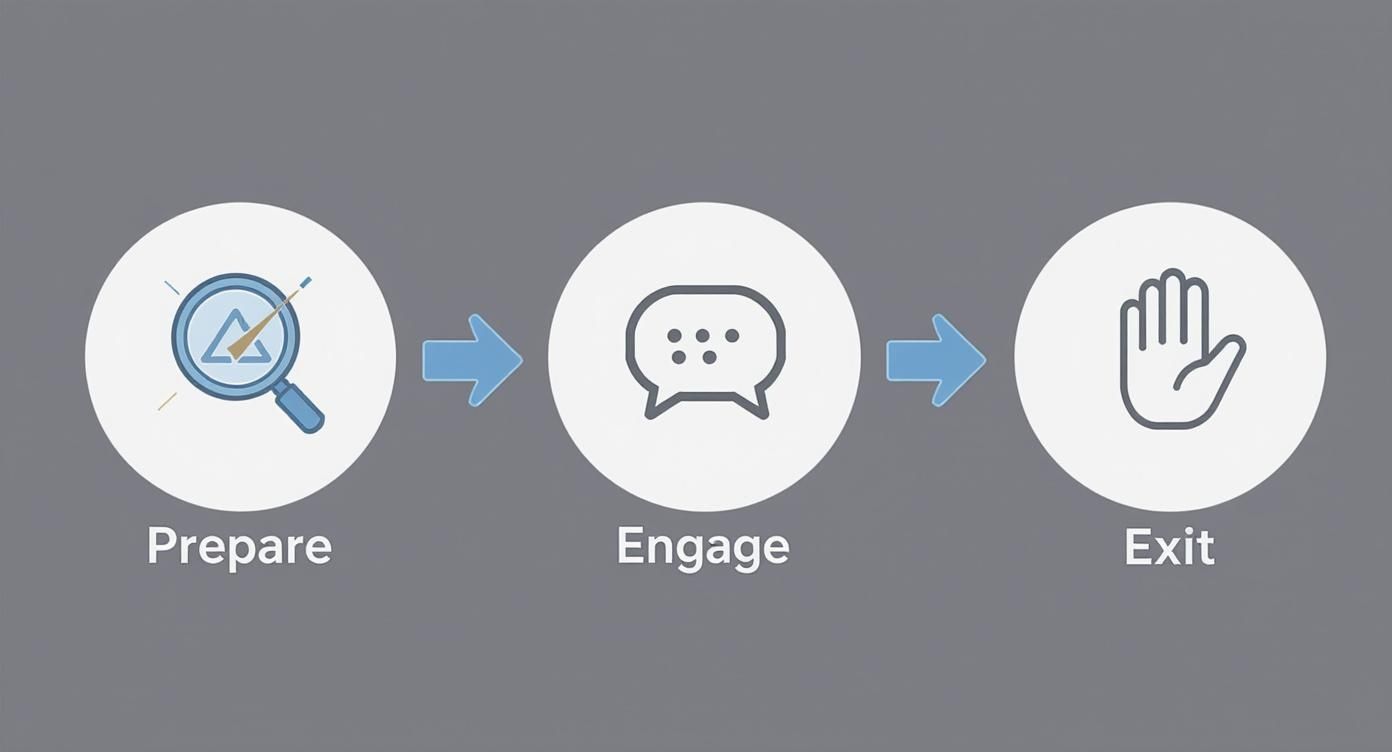
As you can see, networking isn't just about the event itself. It starts with your prep and carries on long after you've left, making the follow-up a non-negotiable step.
Crafting the Perfect Follow-Up Message
Okay, so what do you actually write? Generic messages like "Great to meet you!" are a waste of time—they’ll be forgotten in seconds. You need to be specific, personal, and add a little value.
Try to recall something specific you talked about. Did you both nerd out over a particular industry challenge? Find a great article on that topic and send it their way. This simple gesture of giving without asking for anything in return is incredibly powerful and makes you stand out from the crowd.
Here’s a quick rundown to get it right:
- Timing is everything. Send your message within 24-48 hours. Any longer, and the memory of your chat will be fuzzy at best.
- Pick your platform. LinkedIn is usually the go-to for professional connections, but a direct email is great if you exchanged cards.
- Keep it simple. Use a personalized subject line, remind them where you met, mention a specific detail from your talk, and end with a friendly, no-pressure closing.
Here's a quick example you can adapt:
Subject: Great Chat About B2B Content Strategy
Hi [Name],
It was a pleasure meeting you at the [Event Name] yesterday. I really enjoyed our conversation about the challenges of creating engaging B2B content.
Following our chat, I came across this article on interactive content that I thought you might find useful.
Hope to cross paths again soon.
Best,
[Your Name]
This kind of thoughtful outreach is how you build a real network. To help you nail the timing, I've put together a quick guide.
Follow-Up Timing and Content Guide
The table below breaks down when you should follow up and what kind of message to send based on different networking scenarios.
| Situation | Ideal Follow-Up Window | Example Message Focus |
|---|---|---|
| After a Conference/Event | 24-48 hours | Reference a specific conversation point and share a relevant article or resource. |
| LinkedIn Connection Request | Within 24 hours of meeting | "Great to meet you at [Event]. I enjoyed our chat about [Topic] and would love to connect." |
| After an Informational Interview | Within 24 hours | A personalized thank you, mentioning a key takeaway and reiterating your interest. |
| No Response to First Email | 3-5 business days | A gentle nudge, forwarding the original email with a short, friendly check-in. |
Remember, consistency is key. Even if you don't get a reply right away, don't be discouraged. There are smart ways of mastering the follow-up email after no response that can get the conversation going again. It’s these small, consistent efforts that build strong, lasting professional relationships.
Nurture Your Network for the Long Haul
https://www.youtube.com/embed/Q3MiprEqbC0
So, you've made a bunch of new connections. Great! But the real magic isn't in collecting contacts—it's in turning them into genuine relationships. The true value of your network doesn't pop up after one coffee chat; it's built over months and years of real connection.
This is all about shifting your mindset from "what can I get?" to "what can I give?" When you consistently offer help, share a useful article, or just provide a bit of encouragement with no strings attached, you build incredible trust. People remember that. You become known as a helpful, generous person, and that's who people want to help in return.
Stay Top of Mind Without Being a Nuisance
Keeping these relationships warm doesn't have to be a huge time-suck. It's about small, consistent habits that keep you on people's radar in a good way. It shows you’re paying attention and that you genuinely care.
- Celebrate Their Wins: Did someone in your network get a promotion on LinkedIn? Don't just hit the like button. Drop a real comment congratulating them.
- Play Matchmaker: If you meet two people who would really benefit from knowing each other, introduce them! This is one of the single most valuable things you can do.
- Send a "Thinking of You" Note: See an article that makes you think of someone? Send it over with a quick "Saw this and thought you'd find it interesting." A quick note on a work anniversary also goes a long way.
The strongest professional networks feel more like communities than a list of transactions. Your goal should be to become a valuable hub for people—someone who helps others connect, learn, and succeed.
Look, this stuff takes consistent effort and good relationship-building skills, but the return is massive. You're not just building a list of names; you're building a professional support system. This is the network that will cheer you on, give you honest advice, and open doors for you when you least expect it. It's the difference between asking a stranger for a favor and getting help from a friend.
Navigating Those Awkward Networking Moments
Let's be real—even the most seasoned networker runs into tricky situations. Knowing how to handle these moments will keep you from feeling flustered and help you stay in control of the conversation.
Talking to the "Big Shots"
One of the biggest anxieties I hear about is approaching someone way up the ladder. You see a VP or a well-known industry leader, and your mind just goes blank. The trick here is to flip the script: don't think about what you can get, think about what you can give—even if it's just genuine, well-researched admiration.
Forget the vague "Can I pick your brain?" line. It’s overused and puts all the work on them. Instead, show them you've actually paid attention.
Try this: "Hi [Name], I've been following your work on [Project/Company] for a while. That article you wrote on [Specific Topic] completely changed how I think about it. If you ever have 15 minutes to spare in the coming weeks, I’d be fascinated to hear how you got into that field."
See the difference? You've shown you respect their expertise and aren't just looking for a handout. It's a much warmer, more genuine approach.
The Art of Asking for a Referral
This one feels transactional and awkward, right? It doesn't have to. The secret is to make it incredibly easy for them to help you. The goal is to turn a big ask into a simple, two-minute task for them.
Don't just send a message saying, "Hey, can you refer me?" You need to do the heavy lifting.
Give them everything they need in one go:
- A short, punchy paragraph explaining exactly why you're a perfect match for the role. Write it so they can practically copy and paste it.
- Your polished, up-to-date resume.
- The direct link to the job posting.
When you do this, you’re not just asking for a favor. You're showing respect for their time and making it a breeze for them to pass your name along.
What to Do When the Conversation Dies
It happens. You’re talking, and suddenly… crickets. The conversation just hits a wall. Don't panic and walk away.
This is your cue to pivot to open-ended questions that aren't about their job title. People love talking about things they're passionate about.
Ask things like, "What's a project you worked on recently that you were really excited about?" or "What's one trend in our industry you think is overhyped?" These questions invite stories, not just one-word answers, and can get the conversation flowing again.
Ready to make your LinkedIn presence unforgettable? RedactAI helps you create high-impact posts in minutes, so you can focus on building connections while your content does the talking. Join over 21,000 creators and start building your personal brand today. Find out more at RedactAI.



